Keeping it Real: The Importance of Authenticity in Your Child’s Writing Life
If you want your students to care about writing, give them writing projects that actually matter.
If you want your students to care about writing, give them writing projects that actually matter.
Parents, I have an assignment for you. I want you to plan out a week’s worth of meals for your family, taking into account each family member’s likes and dislikes. Write out the grocery list, and be careful, because I’ll be checking to see that you didn’t forget anything and nothing is misspelled. When you’re finished, just file it away somewhere. We were never going to actually shop for the meals or cook the meals. I just wanted to see if you could do the assignment.
Any takers?... No? I don’t blame you.
Many kids feel the same way when they’re made to write without an audience beyond the assigning adult on the receiving end of their work. That’s why we need to seek out opportunities for authentic writing for our young writers. Authentic writing refers to writing that is done for a real purpose and for a real audience. Authentic writing is intrinsically motivating and helps to provide kids with a sense of the potential power of having strong writing skills.
Here are five suggestions for adding some authenticity to your homeschool’s writing program:
1. Do Business.
Have your student write a letter or email to a business. The content can either be full of praise for a job well done or dismay at a poor experience. This is a great time to talk about tone and professionalism. One of the best things about this assignment is that more often than not, kids receive replies to their missives. When I’ve done business letter assignments with classes before, students have even received autographed photos, coupons, and letters signed by CEOs. Talk about gratifying!
2. Review.
Amazon, Yelp, Google, and Rainbow Resource are just a few of the abundant opportunities online for leaving reviews that will be read by a wide audience. Use the existing reviews rated as “most helpful” as mentor texts to help your student draw conclusions about what makes a good review.
3. Blog.
Whatever your young writer chooses as the focus of his or her blog, it’s a great opportunity to share something with friends and family.
4. Slam or Snap.
Book clubs aren’t the only literary reason to gather people together. Consider hosting a poetry café or poetry slam with other homeschooling friends. Everybody gets to share an original poem.
5. Serve.
Can you find a way to serve your community via writing? You might consider teaming up with a local nursing home or assisted living community to record the life experiences of elderly people. Kids stand to learn so much from seniors who have experienced the history they’re learning about, and families will no doubt be grateful to receive a written record of their loved ones’ stories.
Curriculum Review: Michael Clay Thompson’s Language Arts
Rebecca loves the nerdy grammar fun of Michael Clay Thompson’s Language Arts. It may not be for everyone, but it’s definitely for word lovers.
Michael Clay Thompson’s language arts curriculum is the sort of treat we homeschool moms and dads enjoy as much as our kids. In my experience, too few people know about this gem of a resource, and I’m excited to have the chance to share it here with you.
Thompson is no ordinary teacher, and this is not your run-of-the mill curriculum. Seeking to introduce students to English language arts in its highest forms, Thompson writes eloquently, with frequent literary references. My 11-year-old son has noticed, “This is like taking a class with a professor.”
Those looking for a secular classical resource to teach language arts will be especially appreciative of Thompson’s approach. Vocabulary lessons based on Latin and Greek stems are far more interesting than those normally found in traditional text books. Classical literature is referenced throughout the program so you’ll want to keep a pen and paper handy just to jot down all the reading suggestions. Thompson’s program might serve as launch pad that sparks your child’s interest in classical history as well.
Thompson endorses the Socratic method of teaching—asking probing questions that encourage students to unearth answers themselves. Throughout the teaching manuals, he provides tips for parents that encourage lively, organic discourse, and critical thinking skills.
For the purposes of this review, I looked at the complete set of texts for Level Two which is written for the 4th grade and up. In all, there are 4 levels:
Level 1 (for 3rd grade and up): Grammar Island, Practice Island, Building Language, The Music of the Hemispheres, Sentence Island
Level 2 (for 4th grade and up): Grammar Town, Practice Town, Caesar’s English I (or CEE 1), Building Poems, Paragraph Town
Level 3 (for 5th grade and up): Grammar Voyage, Practice Voyage, Caesar’s English II (or CEE 2), A World of Poetry, Essay Voyage
Level 4 (for 6th grade and up): Magic Lens 1, 4 Practice 1, The Word Within the Word 1, Poetry and Humanity, Advanced Academic Writing 1
Each level contains texts that can be ordered separately or, for a small savings, as a bundle. Those who purchase the full set will have a comprehensive language arts program that teaches grammar, vocabulary, writing, and poetry at an accelerated level. Thompson designed this curriculum with gifted students in mind; however, by adjusting the suggested grade levels, this program could be adapted for a wider range of motivated learners.
To better acclimate to this program’s unique style, some families might find it helpful to start at the beginning of the series. While each level could serve as a stand-alone program, the material is cumulative and diving into its middle may be difficult for learners accustomed to a more conventional curriculum.
Each student book has a separate accompanying teacher’s manual. Families wishing to save a few dollars could do so by purchasing only the teacher’s manual which includes the student text in its entirety. Much of the information for teachers appears in the back of the teaching manuals. Although text boxes for parents appear throughout the guides, they are small and unobtrusive; most students could still read the books without distraction or difficulty.
Formatting in each book is straightforward with lots of white space and stylized fonts. At first glance, the slim texts might appear to lack substance. However, upon closer inspection, most students will find the content on these pages to be generous, dense, and rich with detail. Photographs of art and important quotations are sprinkled throughout each text and form a significant portion of each lesson.
For those wishing to further enhance their child’s experience, an optional literature component can be purchased separately. Level Two takes a look at the novels Alice’s Adventures in Wonderland, Peter Pan, and The Wind in the Willows. Each book is reproduced to include an examination of poetic techniques, four-level analyses of interesting grammar, and a look at writing strategies. Vocabulary is reviewed at the end of each page. By working through these stories, concepts studied in Level Two’s textbooks can be reinforced in the context of compelling literature. The accompanying parent manual features commentary from Thompson about each novel, advanced vocabulary words, discussion questions, activities, and guidance to support students’ efforts practicing academic writing.
The Royal Fireworks Press website features free videos and sample readings from the books, along with other materials to support parents’ teaching efforts.
Pricing details vary depending on how items are purchased. The complete Level Two homeschool package, which does not include the literature trilogy mentioned above, is $260. If ordered on the publisher’s website, the cost is $225. The Alice, Peter, and Mole Trilogy Set and Parent Manual is an additional $40. For more pricing information, visit the Royal Fireworks Press website.
Not every student will enjoy this program. Some learners may consider the elevated, formal style of prose stuffy or pretentious and the level of detail too difficult. This is a curriculum for a family in love with language and all its complexity who wants to explore this subject in depth. If that sounds like you, this is a curriculum worth checking out. Enjoy!
We the People: A Community Model for Exploring the U.S. Constitution
“A Community Conversation to Understand the U.S. Constitution” was a profound and powerful experience for Carrie’s homeschool.
“A Community Conversation to Understand the U.S. Constitution” was a profound and powerful experience for Carrie’s homeschool.
One of the more rewarding learning experiences I’ve had with my 14-year-old son this year has been participating in We the People MN, a series of community teach-ins about the Constitution held at Solomon’s Porch, a Minneapolis gathering space housed in a former church. Run completely by volunteers, We the People MN bills itself as “A Community Conversation to Understand the U.S. Constitution.” I wanted to share a little about our family’s experience with the series in the hope of inspiring other programs like it across the country.
The idea for the series came from Cara Letofsky, a South Minneapolis resident who posted on her neighborhood Facebook group that the 2016 election made her want to learn more about the Constitution. About 60 people responded that they shared that desire to come together as a community to educate themselves politically. A small group of about ten volunteers followed up to plan the series, deciding what amendments they especially wanted to learn about and collaborating to identify community experts who might be willing to tackle leading a discussion of particular amendments. Working their community connections, they lined up a group of highly qualified presenters willing to volunteer their time, including a law professor from a local university, a Minneapolis city council member, attorneys, law students, and organizers from groups that are deeply involved in such contentious Constitutional issues as gun control laws, the right to vote, and reproductive rights.
The organizing committee decided on a format of 10 two-hour presentations, spaced out every two weeks from mid-January 2017 to late April 2017. The first program was a kick-off potluck (because everything always goes better with good food) and a public reading of the entire Constitution, with participants taking turns reading sections aloud at the mic. The organizers also distributed free pocket copies of the Constitution, donated by one of the organizers, Constitutional law professor Matt Filner. Finding free or cheap pocket Constitutions isn’t difficult, luckily. The National Center for Constitutional Studies, for instance, offers a bulk purchase of 100 pocket Constitutions for $40 on their website.
Cara Letofksy, the woman who’d sparked the idea, expected perhaps 20 people to show up to the first presentation. To her surprise, over 80 people attended that first event, and attendance has usually averaged between 100 to 150 participants at subsequent events.
In their initial planning discussions, the organizers knew they couldn’t cover the entire Constitution, so they decided to focus on Constitutional rights that might be most directly challenged under a Trump administration. Other communities might want to choose a different focus, such as looking at ways the Constitution directly impacts local issues and controversies.
The We the People MN series has covered such issues as the branches of government and separation of powers, as well as the First Amendment’s guarantees of freedom of expression and assembly and the Second Amendment’s guarantee of the right to bear arms (as well as the limitations implied by the wording of the amendment). One program was devoted to the right to privacy (and the limits on our privacy). Another event focused on the Fifth, Sixth, and Thirteenth Amendments and their relevance to criminal justice today. The series’ last presentation on the amendments will look at the right to vote guaranteed by the Fifteenth, Nineteenth, and Twenty-Fourth Amendments—and how that right to vote is being steadily eroded today. The series’ last gathering, planned for the 100th day of the Trump administration, will feature a community potluck and “next steps” discussion.
Each event has included a “TED”-style talk by an expert to set the stage for further discussion, followed by time for participants to talk in small groups and share their thoughts and bring up questions for the expert presenter. Almost every presentation has also included brief talks by local activists working in some way on problems raised by ongoing Constitutional debates. Often, these activists have given participants in the programs concrete ideas about how to get involved. For instance, at the event devoted to Second Amendment issues, a presenter from the group Protect Minnesota passed out factsheets about upcoming gun legislation and tips for creating effective talking points. The group highlighted that the most effective advocates usually find a way articulate their personal connections to proposed legislation.
Each presenter also typically sends out readings ahead of time through the We the People MN Facebook page for participants who want to take a deeper dive into topics, though the readings aren’t required to understand the presentations. The readings have ranged from excerpts from the Federalist Papers to summaries of key Supreme Court cases to up-to-the-minute news articles about contemporary Constitutional controversies.
For my son and me, attending these events has been a bonding, highly relevant way to study civics together. Throughout our week, we often find ourselves still talking about what we learned at the most recent We the People presentation. The series has given us new tools for understanding how the Constitution relates to our everyday lives and the lives of those around us.
I’ve also found the series personally helpful as I’ve stepped up my own game as a citizen this year. I’m calling my legislators and attending more public hearings, meetings, and protests than ever (and when I can, hauling my son along with me). Studying the Constitution in this way has given my son and me a clearer sense of what people fighting for change are up against and how we as citizens can make the best use of our time and people power.
Above all, I love that my son has seen people of all ages and backgrounds getting together every other Sunday afternoon to educate ourselves about our Constitution. To me, that’s been such a powerful example of lifelong learning and civic engagement, one I hope will stick with him the rest of his life. I think another crucial piece of the whole experience has been learning from people who are actively involved in the conversation about how to define our Constitutional rights and who are fighting to preserve those rights.
The volunteers who set up We the People MN are hoping to export the model elsewhere. They have plans to create a curriculum to help other people set up their own series, ones that will be relevant to their local communities. If you’d like to learn more, see videos of the presentations, and keep apprised of curriculum developments, you can visit the group’s public Facebook page.
Homeschool Transitions: Making the Shift to Middle School
If you’re homeschooling your middle schooler, you probably have a lot of questions. The good news: It’s going to be pretty exciting to navigate these big changes with your homeschooler.
Making the transition from elementary to middle school can feel intimidating, but try to see it as a dress rehearsal: Here’s where you lay the groundwork for high school and your child’s learning future, whether that includes heading off to college, mastering a trade, or starting her own business. These are the years when you’ll try lots of different materials, projects, and methods—go in knowing that some of them won’t work. You will fail sometimes, and it will be okay. If there is one overriding message for your middle school years — for you and for your tween — it’s that messing up is just part of the process.
By middle school, your child probably has mastered his educational basics. He can read. He can add and subtract, multiply and divide. He knows some history and some science. He can write a paragraph on a given subject. If you look at lists of what a 6th grader or a 7th grader needs to know, you won’t find a lot of traditional skills listed. Instead, you’ll find an emphasis on analysis: The middle school years are when knowledge takes on meaning — messy, open-to-interpretation meaning — and encouraging your child to question, analyze, and critique the world around him is one of the most supportive things you can do as a homeschooling parent. Here’s what to consider as your child moves into middle school:
Look for outside classes.
The tween years are an optimal time for kids to test-drive different kinds of teaching styles and evaluation methods. Different teachers with different expectations give your child the opportunity to discover her strengths and weaknesses in a safe space — and that self-knowledge will play an important role in her future learning.
Don’t drop physical education.
Even more than little kids, tweens need active time. Between ages 9 and 16, kids develop their lifelong attitudes toward exercise: Kids who get regular exercise now are more likely to exercise as adults. Regular exercise also gives kids a healthy way to cope with the emotional overload of adolescence and can develop the parts of the brain that help them learn — and remember what they’ve learned — more effectively.
Hand over the reins.
If you haven’t already started giving your homeschooler decision-making power about what and how he studies, now’s the time. If you’re committed to covering certain subjects every year, stick with your plan — but let your tween weigh in on how you cover those subjects, and give him space to decide what outside classes or other interests he pursues. While you’re at it, hand your tween her own calendar, and let her start to handle scheduling her activities and keeping up with homework and deadlines. Let her practice keeping (and keeping up with) notes and materials for her classes. Yes, your child may muck up an assignment or miss a meeting, but she’ll be learning how to organize and manage her time while the stakes are still low.
What should you study in middle school?
Be ready to nitpick everything because that’s where your tween’s academic inclinations will point him. Middle school is all about taking things apart and looking at them from different perspectives. Don’t be surprised if your child is quick to latch onto other perspectives, especially those of his friends.
Language arts
Steer your student toward the nonfiction section of the library. Biographies make a great starting point—the Childhood of Famous Americans series or the DK Biography series include a wide range of historical figures. Encourage tweens to look beyond the story in fiction, considering topics like character, setting, plot, and theme.
Middle school writers should start to practice the art of revision. A good writing book, like The Elements of Style or How to Write a Sentence: And How to Read One, can help this process, or consider a writing curriculum like Cover Story [Editor's Note: There are a few traces of religion in Cover Story, most notably in the section on conducting interviews, in which the example interview is one with a missionary in Sudan, and an occasional Bible verse as an example of sentence construction. Religious references aren't the only examples, and there's no proselytizing or anything like that, but you should be aware.] , which guides kids through several different types of non-fiction writing, or Moving Beyond the Page, which is a practical option for kids and parents who want step-by-step guidance.
Learning how to find, use, and correctly cite sources is important now, too. (The Purdue Online Writing Lab has a handy online guide to help cite sources—from personal interviews to webpages— correctly.) Research papers that combine original thinking and opinions with thoroughly researched information from a variety of sources are a key achievement of middle school language arts.
Math and science
Your tween will make the leap from memorizing facts to analyzing data during middle school. Expect him to get familiar with scientific notation, charts, and graphs, as well as tools like calculators, protractors, and compasses. In math, you’ll be moving beyond the basics into algebra and geometry, including solving lots of word problems, getting a grip on the concept of negative numbers, and figuring out fractions, decimals, and percentages. Often, this is when parents start to feel insecure about our ability to teach math—if you’d like a program that does the teaching for you, consider Teaching Textbooks, which delivers lessons via DVD, or an outside math class. (But keep in mind: a smart math curriculum can also give you back the math confidence your own middle and high school math classes may have taken away.)
In science class, break out the microscope and telescope to explore the micro- and macrocosm. Explore technology and how things work. Pandia Press R.E.A.L. Science Odyssey Level 2 may be the best traditional middle school science curriculum out there, or take a literature-based approach with The Story of Science series.
History and social studies
If you haven’t already made current events part of your routine, get plugged in now. CNN 10 (formerly CNN Student News) makes a good check-it-every-day resource for keeping up with world events, and you can find in-depth ideas for exploring current news topics via The New York Times Learning Network.
Your middle schooler is also ready to dig into meatier issues, including social justice, environmental ethics, historical conflicts, and more. Trying to see historical events from different perspectives is a mind-expanding experience.
Book Review: The Wrong Side of Magic
Hudson’s got a troll curse to break, and if he wants to get back to normal, he’s going to have to team up with hist not-normal-at-all neighbor Charlotte. Charlotte, though, is on a mission of her own: to restore the vanished Princess to the throne and get rid of the evil usurper Prince Varygran once and for all. Along the way, they’ll run into punctuation markets, marauding encyclopedias, unicorns, mermaids, magic, and more.
I feel that I should start out by saying that this book is not like The Phantom Tollbooth. A lot of the advance reviews I read compare The Wrong Side of Magic to Norman Juster’s childhood classic, but I think if you go into this book expecting it to be the next Phantom Tollbooth, you’ll be pretty disappointed. Which would be a shame because The Wrong Side of Magic is actually a charming little book.
Hudson’s neighbor Charlotte is odd. So he’s pretty annoyed when Charlotte convinces his little sister that the only way to cure her sick cat is to use Charlotte’s magical compass to travel to the world of Logos and collect the enchanted catflower that grows there. But when Hudson uses the compass himself, he discovers that Charlotte was telling the truth: Logos is real, and if he’s going to navigate the world of words and get rid of that nasty troll curse he managed to pick up, Hudson’s going to have to team up with Charlotte. Charlotte, though, is on a mission of her own: to restore the vanished Princess to the throne and get rid of the evil usurper Prince Varygran once and for all. Along the way, they’ll run into punctuation markets, marauding encyclopedias, unicorns, mermaids, magic, and more.
This is a fun quest story with lots of playful puns and clever wordplay. The land of Logos obviously owes a little debt to Dictionopolis and The Phantom Tollbooth, but it’s its own place with its own rules and inhabitants. Hudson is a pretty typical male protagonist, determined to fill his deployed father’s shoes by taking care of his mom and sister, while Charlotte has a Luna Lovegood wackiness that balances his seriousness well. They make a good team, putting together clues and braving hazards in their quest to save the kingdom of Logos from its evil ruler, always just a few steps ahead of his relentless army, and the evolution of their relationship — from reluctant allies to firm friends — rings true. Some of the scenes are hilarious word nerd fun (like the market scene where Charlotte and Hudson are looking for a word snack to share, and Charlotte explains they can’t share “to explore” since you can’t split infinitives).
The verdict: The Wrong Side of Magic would be a great family readaloud on its own with the bonus of launching fun conversations about language and grammar.
(We’re Amazon affiliates, so if you purchase something through an Amazon link, we may receive a small percentage of the sale. Obviously this doesn’t influence what we recommend, and we link to places other than Amazon.)
Teaching Literature-Based History without a Curriculum
Truly, the biggest hurdle to cobbling my own history curriculum together has been organizing the resources in such a way that I know where they are, I remember all of the ideas that I had, and I don’t leave anything out.
“Truly, the biggest hurdle to cobbling my own history curriculum together has been organizing the resources in such a way that I know where they are, I remember all of the ideas that I had, and I don’t leave anything out.”
I must have filled in so very many history worksheets as a kid sitting at a desk with a textbook, but I can’t tell you much that I learned sitting in that desk. The truth is that most of the history I learned as a kid came from Bill and Ted’s Excellent Adventure and historical fiction that I found on the library shelves. For that reason, I knew that I wanted to take a literature-based approach to history with my kids.
The secular homeschooling community isn’t exactly awash in literature-based options, though. Last year when I couldn’t find anything that would work for teaching early American history to my 2nd graders, I decided to wing it. We made our way from prehistory through the colonial period, and this year in 3rd grade we’re attempting to read our way through the Revolutionary War through the Civil War. Given how many great books and resources are out there, it hasn’t been so hard to put it together myself, and, as so often happens in homeschooling, I’m learning considerably more than I knew before.
Truly, the biggest hurdle to cobbling my own history curriculum together has been organizing the resources in such a way that I know where they are, I remember all of the ideas that I had, and I don’t leave anything out.
My solution to the organization issue is creating a collection of spreadsheets for the year. I divide the year up into units, with each unit getting its own spreadsheet. This year, my spreadsheets are titled Revolutionary War, Westward Expansion, Slavery, and Civil War. Those with older children studying in greater detail may also want to divide larger units into mini-units and give them their own spreadsheets. For example, World War II might be divided into mini-units such as The Role of Women, Allies and Axis Powers, The Holocaust, The Homefront, and Military Technology.
The spreadsheet has two purposes. First, the spreadsheet serves as a comprehensive list of all of the resources I’d like to use within a unit. It includes field trips, historical fiction selections, selected activities from supplemental resources like History Pockets, nonfiction literature, videos, poems, and audiobooks.
The spreadsheet’s second purpose is to help me keep track of where things are. My columns at the top are On Hand, Library, Field Trip, and Activity. Given how many books we’ll use, it’s important to keep track of which books I have on hand at home and which books I’ll pull from the library shelves. This makes it easy, too, for putting together our list for the library. The Field Trip column serves as a visual reminder for me to make room on our calendar and take any necessary planning steps to pull off the field trip. In the Activity column, I mark the page on which the activity can be found and the acronym for the book it can be found within.
In addition to my spreadsheets, the other organizational tool that keeps my DIY literature-based history curriculum humming is a milkcrate. I’ve pulled every history resource I’ll use for the year and placed it in the milkcrate for ease of finding. It helps to avoid all of those awful times when you’re meandering around saying, “I know we have it somewhere, but I can’t find it.”
Whatever period of history you’re studying with your kids this year, I hope that these organizational tips can help you feel more in control of the sprawl that comes along with studying history with literature.
(We’re Amazon affiliates, so if you purchase something through an Amazon link, we may receive a small percentage of the sale. Obviously this doesn’t influence what we recommend, and we link to places other than Amazon.)
Book Review: The Accidental Apprentice
The Accidental Apprentice is a real middle grades charmer, and I’m delighted it’s the first in a series. Kids who love Pokemon, How to Train Your Dragon, Fablehaven will appreciate the secret magical world inhabited by Lore Keepers, who bond with and train the world’s magical creatures. It’s a great magical world with thoughtful organization, peopled with interesting characters and creatures.
All Barclay wants is to be like everybody else. Orphaned in an attack by one of the fantastic beasts that roam the Woods, he knows his only shot at a family and a normal life is to apprentice himself to one of the villagers — and if the only person willing to take him on is a mushroom farmer, well then, Barclay is going to be the best darn mushroom farmer Dullshire's ever seen. When he slips into the woods and accidentally bonds with a magical beast, things get complicated, and Barclay discovers that the only way to get out of this new adventure and get his normal life back is to come in first in the Lore Keepers’ apprentice exhibition. Unfortunately, some of the Lore Keepers are up to no good, and they, too, are pinning their plans on the apprentice exhibition.
The Accidental Apprentice is a real middle grades charmer, and I’m delighted it’s the first in a series. Kids who love Pokemon, How to Train Your Dragon, Fablehaven will appreciate the secret magical world inhabited by Lore Keepers, who bond with and train the world’s magical creatures. It’s a great magical world with thoughtful organization, peopled with interesting characters and creatures. I also like Barclay as a reluctant hero — a kid who’s worked so hard to be “normal” doesn’t let go of that desire easily, even when there are fantastic storm hounds and tiny dragons around. His bond with his Beast feels real — he pushes against it at first, but he can’t help feeling a connection to the magical creature who chose him in the Woods.
If you’re looking for a new magical world to explore, this one’s worth visiting. I really enjoyed it.
(We’re Amazon affiliates, so if you purchase something through an Amazon link, we may receive a small percentage of the sale. Obviously this doesn’t influence what we recommend, and we link to places other than Amazon.)
Book Review: Karma Moon, Ghost Hunter
Karma Moon, Ghost Hunter is a middle grades Ghost Hunters, and I’m here for it.
Karma Moon, Ghost Hunter is a middle grades Ghost Hunters, and I’m here for it. After years of trying, her dad’s film crew finally has its first big break: Netflix wants them to shoot a pilot for a ghost hunting docu-series on location at the very spooky Stanley Hotel. If the pilot shoot is a success, the series gets the green light — and Karma and her dad get a major life upgrade. They could use one — life hasn’t been easy since Karma’s mom took off for Florida one day and never came back, leaving Karma with some serious anxiety and her dad with too many bills.
Karma’s convinced this is their big break, though, and with her best friend Mags along for support, she dives into her newly created position as head of research, learning everything she can about the hotel’s haunted history. She’s expecting spooky happenings like she’s seen in “Poltergeist,” “Ghostbusters,” and “The Shining,” and she’s not disappointed — something weird is definitely going on at the Stanley Hotel.
This is a fun, spooky-not-scary book with a likable protagonist coping well with ongoing anxiety. (I love that she has therapist-recommended coping strategies for anxiety that she and other characters refer to matter-of-factly.) The books is also full of haunted history, including lots about Harry Houdini, which has made me want to do a whole Houdini unit study. Don’t let the Scooby Doo vibe fool you — there’s complex character growth happening in this story, as well as madcap haunted house hijinks. It’s definitely going on my middle grades must-read list.
(We’re Amazon affiliates, so if you purchase something through an Amazon link, we may receive a small percentage of the sale. Obviously this doesn’t influence what we recommend, and we link to places other than Amazon.)
Getting Ready to Homeschool High School
The secret to transitioning to homeschooling high school isn't so secret: Just keep doing what you've been doing, and trust that you've gotten to know your kid's academic abilities.
The secret to transitioning to high school isn't so secret: Just keep doing what you've been doing, and trust that you've gotten to know your kid's academic abilities.
Really, high school is the easy part. By now, you’ve found your homeschooling groove. You know your child’s interests and her strengths. You probably even have a pretty good idea of what she’d like her post-high school life to look like. All you have to do now is help her get there.
The key to homeschooling high school is to trust your teenager and to trust the homeschool rhythms that have worked for your family. “Someone says ‘high school,’ and you feel like, ‘oh, I have to get serious and start doing really serious things with my kid,’” says Lisa Millan, who has sent two homeschool grads off to college. “But shifting away from the homeschool patterns you’ve spent years finding is a big mistake.”
In fact, these are the years when all that work you’ve been doing will really start to pay off. By ninth grade, your child should be ready to take the reins of his education and tell you where he wants to go — whether that means college, preparing to launch a business, taking an apprenticeship, or becoming an artist. Keep these things in mind as you’re making your high school plans:
Invest in your child’s passion. By high school, your student knows what he likes — and those interests are where the bulk of your homeschool budget should go. If he’s Broadway-bound, spend on acting and voice lessons and find cheaper alternatives for math and language arts. If she’s planning to study astrophysics, invest in a high-quality telescope and community college astronomy classes. Take these passions into account when you’re blocking out schedules, too — your child’s interests should dictate how his time gets allocated.
Be a planner. Some of the things your high schooler will want to do — take the SAT, get a driver’s license, apply to an internship program — can feel like bureaucratic nightmares to freewheeling homeschoolers. Do yourself a favor and start prepping for these kinds of things well in advance of their deadlines. Often forms and requirements assume a very traditional school experience, and trying to figure out how to fit your homeschool experiences into these kinds of narrow boxes can be stressful and frustrating. It’s definitely not something you want to try to do with the pressure of a deadline breathing down your neck.
Don’t freak out over gaps. During your child’s high school experience, you’ll run into topics that your education hasn’t covered. Don’t let this convince you that your education has somehow short-changed your kids. All educations have gaps. If you feel that a missing component is genuinely worth covering, by all means, go ahead and cover it — but know that however much you manage to cover in your high school, there will be things your teen graduates from high school not knowing. There will be things your child will celebrate his 50th birthday not knowing, too — that’s how learning works. It’s more important to teach your high schooler how to learn something when he needs or wants to know it than it is to teach him every fact in the world.
Get organized. Your child’s post-high school plans may require you to have a transcript ready to go, and your life will be much simpler if you start high school with this in mind. Perhaps the easiest transcript-making method is to borrow an idea from traditional schools and keep a quarterly update of classes, grades (if relevant), and books. Have a safe place to store papers, projects, and other work in case your child needs samples or a portfolio down the road. Do this, and whether you’re making a transcript, a resume, or notes for your child’s biographer, you’ll be in good shape.
Course of Study
If elementary school is about absorbing information and middle school is about analyzing it, high school is a time for playing with information — thinking abstractly, expressing new ideas, and communicating effectively. As you’re planning what to cover, look to the most rigorous college on your child’s list, even if he’s not sure whether he wants to go to college or follow a different path. Laying out an academic plan that meets the admission guidelines of that institution will give your high schooler maximum post-graduation options (and a well-rounded high school education, too).
Language arts: Students should dig deeper into literature, tackling heavy-hitting classics as well as works from other cultures. The Norton Anthologies are great resources here, offering biographical information, historical context, and discussion starters for a wide range of literary works. Get a taste of American, British, and World literature. For kids who love literature, consider some of the free MOOC (Massive Open Online Courses) available from websites like Coursera. These classes can be a great way to dig deeper into an author or period your student finds fascinating.
It’s writing, though, that really matters for high school language arts — and we’re not talking about the dreaded five-paragraph essay. What high schoolers need to master here is the ability to make and support an argument, to write persuasively and effectively, and to use vocabulary and literary techniques to enhance their work. A book like the Brief Bedford Reader can be a great resource for this, with a nice selection of essays and lots of practical guidance for better writing.
Math and science: Most colleges will look for at least three laboratory science classes on your high school transcript, but that’s a good thing — every teenager should get to sample a couple of proper lab classes. Skip the curriculum for these: It tends to be pricey, and a home set-up just isn’t the same. Instead, look for college or homeschool lab classes where your teen can get a real lab experience.
High school math usually includes algebra and geometry — mathy kids will want to add trigonometry and calculus to the list. Teaching Textbooks has a user-friendly, self-paced program if you want to do math at home, or consider making math one of your student’s outside classes during high school.
History and social studies: Most colleges will want to see U.S. and World History on your transcript, as well as government and geography. Ways of the World by Robert Strayer for world history is a smart, critical study of the events and people that shaped the past and a good choice if you want to use a fairly traditional curriculum, or you might like The American Pageant for U.S. History, which does much the same thing. If you're willing to venture beyond tradition (and not counting on AP credits for college), consider alternatives like Stanford's Reading Like a Historian curriculum (I love this one!) or the Big History Project, which starts at the Big Bang. Also consider free online lectures from schools like Stanford or MIT, which can add nuance and interest to sometimes dry historical facts.
Other stuff: If you haven’t started a foreign language yet, high school is a good time to start. (Most colleges will want to see at least two years of foreign language on your transcript.) Latin — with a beginner-friendly curriculum like Ecce Romani — is a good choice for classicists or people who don’t want to fuss with accents; if you want to learn to speak a modern foreign language like Japanese or Spanish, Rosetta Stone’s homeschool programs are a solid if not particularly inspired choice.
(We’re Amazon affiliates, so if you purchase something through an Amazon link, we may receive a small percentage of the sale. Obviously this doesn’t influence what we recommend, and we link to places other than Amazon.) This was originally published in the summer 2015 issue of HSL.
Book Review: Across the Pond
Surely I am not the only person who has imagined what it would be like to randomly inherit a castle in Scotland? With bonus birding adventures.
Across the Pond is a low-key middle grades charmer. Surely I am not the only person who has imagined what it would be like to randomly inherit a castle in Scotland? That’s exactly what happens to Callie’s family: Her mom and dad rented a cottage on the palace grounds while they were in college in Edinburgh, and the owner forged such a bond with her then-newlywed tenants that she left the castle to their family in her will. Adjusting to life in Scotland after growing up in San Diego might seem challenging, but Callie can’t wait — middle school has ripped her friend group to shreds, and she’s ready to reinvent herself in a new place. Only, as it turns out, the scenery has changed, but Callie hasn’t, and within a couple of weeks, she’s made enemies with their new handyman’s daughter and gotten kicked out of the local birding club for arguing that female birds should count in the sighting scores. The only thing keeping her going is the journal the former of the lady of the house kept when she was Callie’s age and shipped off to the countryside during the Blitz. Callie can definitely identify with Pippa’s lonely feeling of being always on the outside.
Of course this is all working toward a happier ending: Callie may have gotten kicked out of the birding club, but it helped introduce her to Rajesh, whose unflappable nice-ness is hard to resist. It also inspired her interest in birds, and as she’s trying to identify the swirling flock of tiny birds that settle in a tree across the lake every night (they’re starlings), she ends up befriending the handyman’s daughter, after all, realizing that everything isn’t always about her. Callie becomes an avid birder, making connections between her life and the birds she observes — just as Pippa did, all those years ago. There’s a core of real sweetness in this book that I loved: We all sometimes feel like we don’t belong, and we’re all delighted when we discover that we’ve found a community. For birding enthusiasts, for middle grades readers who enjoy realistic fiction, for anyone who’s ever wished for that castle in Scotland — you’ll want to pick this one up.
(We’re Amazon affiliates, so if you purchase something through an Amazon link, we may receive a small percentage of the sale. Obviously this doesn’t influence what we recommend, and we link to places other than Amazon.)
Unit Study Idea: The African-American Struggle for Civil Rights, Past and Present
Carrie’s family wanted to study the history of civil rights in the United States, and they found the project incredibly rewarding. These were some of their favorite resources.
Early this year, I told my thirteen-year-old son I’d like to investigate a historical subject with him over an extended period, to give what we learned time to really sink in. He was game, so I showed him a list of potential topics I wanted to learn more about and asked if any intrigued him. He looked over my list and chose the American civil rights movement.
“It seems especially relevant to what’s going on in the news right now,” he commented. Neither of us had any idea just how relevant the topic was going to be.
The last few weeks have been tumultuous ones in America, with the shootings of Alton Sterling, Philando Castile, and Charles Kinsey and of police officers in Dallas and Baton Rouge sparking grief, outrage, and renewed calls for change. Philando Castile’s death hit particularly close to home for our family; Castile was killed during a traffic stop only three miles north of our St. Paul neighborhood, and several of our friends and neighbors have children who attend the school where Castile worked as a beloved cafeteria supervisor.
The following resources are ones my son and I studied together over the last few months, as well as a few that I’ve found personally helpful. These resources are only a very small sampling of the wealth of materials and perspectives out there, but these resources have given my son and me a historical context about systemic racism and African-American resistance that I just didn’t get from my own school education—or from my life as a white person who’s privileged to ignore racism if I choose. I’ve really needed that historical context these last few weeks. I think everyone does.
BOOKS FOR KIDS AND ADULTS
(roughly for ages 13 and up, though obviously you’re the best judge of what your kids are ready for)
Freedman’s book provides a window into Jim Crow America, detailing opera singer Marian Anderson’s struggle to establish herself as an artist in spite of being rejected by a conservatory based on her race and barred from hotels and restaurants as she toured America. The story continues with her success in Europe, her groundbreaking 1939 performance at the Lincoln Memorial, and the rest of her trailblazing career.
The Port Chicago 50: Disaster, Mutiny, and the Fight for Civil Rights by Steve Sheinkin
Sheinkin tells the amazing true story of black sailors who were barred from combat duty during World War II and assigned to loading munitions at a segregated naval base at Port Chicago, California—without receiving proper training or supervision on safe munition handling. In July 1944, a massive explosion at the base killed 300 sailors. In response to the unsafe conditions and unjustly segregated work environment, 244 sailors refused to go back to work until their grievances were addressed, ultimately leading to fifty of the men being charged with mutiny. Sheinkin takes an in-depth look at this important early case in the fight for civil rights.
“Letter from Birmingham Jail” by Dr. Martin Luther King, Jr.
Martin Luther King wrote this essay in April 1963 in response to a statement by eight white Alabama clergymen criticizing King’s methods of nonviolent civil disobedience. King’s argument, begun while he was in jail for breaking an injunction against demonstrating, is a powerful defense of breaking unjust laws in order to fight for a higher good, as well as an excellent model of persuasive writing. It’s also helpful for putting current Black Lives Matter protests into historical context; both King and many Black Lives Matter activists argue that in order to get the powerful to come to the table to negotiate, it’s sometimes necessary to break laws and disrupt “business as usual.”
March, Books One and Two by John Lewis, Andrew Aydin, and Nate Powell
In these graphic-novel style memoirs, Representative John Lewis tells the story of his childhood on an Alabama sharecropping farm and his role in the 1963 March on Washington and the Selma Voting Rights March, among other highlights of a life spent fighting for human rights. Lewis's role in the recent Capitol Hill sitdown strike for gun control makes this an even more timely read.
Marching for Freedom: Walk Together, Children, and Don’t You Grow Weary by Elizabeth Partridge
This account of the 1965 voting rights march from Selma, Alabama begins in compelling fashion: “The first time Joanne Blackmon was arrested, she was just ten years old.” Partridge keeps her focus on ordinary children and teens involved in the historic march and does an excellent job of making the march accessible and understandable for kids. I also love that she shows that there were sometimes disagreements and missteps within the movement; too often, I think we tend to envision the civil rights movement as a perfectly unified, top-down movement led by Martin Luther King. The reality was much messier and more grassroots than the oversimplified version of history enshrined in most school textbooks. This is a great book to read in conjunction with Turning Fifteen on the Road to Freedom by Lynda Blackmon Lowery, a firsthand account by a young person who participated in the Selma March, and We've Got a Job: The 1963 Birmingham Children's March by Cynthia Levinson.
How It Went Down by Kekla Magoon
Kekla Magoon’s young-adult novel tells the story of a black teenaged boy shot by a white man who mistakes him for a dangerous thief and gang member when he’s actually carrying home groceries from the local corner store. Narrated from multiple points of view, the book reveals how painfully difficult it can be to find the truth in the aftermath of a racially charged shooting.
Myers’s 1999 young-adult novel uses an innovative structure — part imaginary screenplay, part diary — to tell the story of Steve Harmon, an African-American teen on trial for murder. Through fragmentary flashbacks, readers gradually piece together Steve’s role in the crime and his journey through a criminal justice system that is predisposed to see a boy who looks like him as a “monster.” For my son and me, this was an eye-opening introduction to the problem of racial bias in our justice system.
X by Ilyasah Shabazz and Kekla Magoon
This fact-based novel by Malcolm X’s daughter and her collaborator Kekla Magoon chronicles the African-American leader’s early struggles with racism as a young boy in Michigan, his years in Boston and Harlem, his imprisonment for burglary, and his subsequent conversion to Islam and decision to change his name from Malcolm Little to Malcolm X.
A FEW MORE BOOKS FOR ADULTS AND OLDER TEENS
Butler’s novel tells the story of Dana, a modern African-American woman transported through time from 1970s America to the antebellum South, where she encounters her ancestors, a white slave owner’s son and his black slave. Through multiple trips spaced over several years, Dana is forced to intervene in her ancestors’ lives in ways that test everything she believes. Butler’s novel is the most compelling, searing examination of slavery and its legacies that I’ve ever encountered, exploring issues of race, sex, family, and gender in mind-blowing ways.
How to Slowly Kill Yourself and Others in America by Kiese Laymon
In this collection of essays, Kiese Laymon examines how racism damages African-American men, and how they in turn inflict pain and damage on themselves and the people they love, especially African-American women. Weaving together hip-hop, stand-up comedy, and other pop culture references, Laymon offers a passionate, introspective, vulnerable perspective on what it’s like to be young, black, Southern, and male in today’s America.
ON THE SCREEN
Eyes on the Prize: America’s Civil Rights Movement 1954-1985 produced by Henry Hampton :: The first six episodes of this fourteen-hour PBS documentary series cover the civil rights movement from the 1954 Montgomery bus boycott to the signing of the Voting Rights Act of 1965. The next eight episodes focus on such key events as the rise of the Nation of Islam, the Detroit riot of 1967, the Black Panthers, and the clash over Boston school desegregation. The series features riveting, occasionally violent news footage and interviews with people involved on both sides of the movement.
All the Difference directed by Tod Lending :: This PBS documentary follows two low-income African-American young men from the violence-ridden South Side of Chicago who struggle to beat the odds and complete high school and graduate from college. The documentary offers a close-up look at what helped these two students overcome multiple obstacles and setbacks.
IDEAS FOR OTHER RESOURCES
In Memoriam of Philando Castile :: The Minneapolis-based community-building organization Pollen put together this collage of music, spoken word, art, and poetry as a response to the shooting of Philando Castile. Especially noteworthy for homeschoolers might be the list of resources compiled by Twin Cities spoken word artist and community organizer Guante. That list can also be found here: http://www.guante.info/2016/07/a-few-resources-links-and-readings.html
YOUR LOCAL HISTORICAL SOCIETY
One thing I didn’t want to do with my son was pretend that racism and civil rights abuses were only a southern problem. Up here in the Twin Cities, one of our most painful legacies is the fate of St. Paul’s Rondo neighborhood, a thriving, vibrant African-American community that officials obliterated to make way for Interstate 94.
The same kind of destruction happened in many other cities, including Chicago, Miami, Los Angeles, Seattle, and Baltimore. The Minnesota Historical Society recently organized a bus and walking tour featuring Rondo history that my son and I were able to participate in. It was a great way for us to learn about the continuing effects of racism and meet people who’d been affected by losing their homes and businesses in the name of progress. A Google search of a phrase such as “How interstates damaged black neighborhoods” yields a plethora of articles. With just a little bit of digging, I suspect you could find similar stories and opportunities for investigation close to home, too—or if you already know about these stories, I’ll bet there are ways you and your family can take an even closer look at the racist legacies in your own back yard and on the roads you travel every day.
Getting Comfortable with Deadlines
One essential skill homeschoolers don’t always get to practice: Turning work in on time.
One essential skill homeschoolers don’t always get to practice: Turning work in on time.
The middle grades are an ideal time to get kids into the habit of working on a deadline. Open-ended projects open up possibilities in ways that due dates never could, so you don’t want to put everything on the calendar — but for high school and college, kids need the experience of turning in projects and papers on a deadline, and middle school is a developmentally appropriate time to work on this skill. That doesn’t mean it can’t be fun, though! Here are a few ways to make due dates a non-miserable part of your homeschool routine.
The final paper advent calendar
Revision may be more important than your first draft, but it can be tempting to put off writing a big paper until the night before it’s due, leaving no time for meaningful revision. One strategy we use is the revision countdown calendar — like those candy calendars that count down to to a holiday, this idea maps out a 14-day revision plan with a to-do envelope to open each day. You might include things like check spelling, revise introduction, and add new evidence, but I like to slip in a few fun things, like go for ice cream, too, so that the calendar feels exciting.
The due date evite
I love this strategy because it gives kids control of their final due date. Instead of assigning a deadline, let kids choose their own deadline, and — at least 10 days before — send you an evite to celebrate their final project. It may be helpful to give students a window (“you need to turn this in before the end of May”). The great thing about this is that evites will remind you that events are coming up, so you don’t have to nag or remind them that their deadline is coming.
Revision dice
Make your own set of dice to help you through the revision process: Roll to add a quote, make a reference to another book, add a counterargument, etc. When your student wraps a project, she rolls the dice the first three times, using her roll to improve her paper before she turns it in for the final time.
Make Deadline Day a party
If you’re just getting started with due dates, you might plan three or four “deadline days” each year, major due dates where students have to submit their work. (Plan a fun celebration, like a trip to the movies to correspond.) Kids won’t always succeed at hitting the mark, especially in the beginning, so don’t cancel the party — you don’t want them to associate projects with punishment — but make a point to talk about what went wrong and to make a follow-up deadline for kids to meet.
Project-Based Learning for Middle School
Project-Based Learning: Creating Modern Education of Curiosity, Innovation, and Impact is a great resource for homeschool parents looking to make project-based learning part of their families’ learning lives.
Project-Based Learning: Creating Modern Education of Curiosity, Innovation, and Impact is a great resource for homeschool parents looking to make project-based learning part of their families’ learning lives.
I’ve been interested in project-based homeschooling since we started homeschooling, but to be totally honest, my kids and project-based learning have been a match made in … well, let’s just say The Bad Place. Our attempts at project-based learning were unorganized, unfocused, and usually ended in a big mess because someone lost interest or couldn’t figure out what to do next. I would look at other people’s awesome learning projects and wonder what they were doing that I wasn’t.
This has been frustrating because project-based learning feels like the right fit for us for middle school. We spent elementary school developing skills, and I know we’ll get more academic in high school if we continue to homeschool. Right now, though, we’re working hard to stretch ourselves to use our skills in all kinds of ways and to get better at creative problem-solving. I want my boys to figure things out for themselves, and I love the way project-based learning supports self-directed learning.
So I was happy but skeptical when I got the assignment to review a new book about project-based learning. Project-Based Learning: Creating Modern Education of Curiosity, Innovation, and Impact is a great resource for homeschool parents looking to make project-based learning part of their families’ learning lives.
The highlight of this book is the Project Planning Workbook in the back, which breaks down long- and short-term projects into specific steps. If you’re like me, and you love the idea of project-based learning but have not had good luck implementing it in your homeschool, you will really appreciate this step-by-step approach. I was able to take the one-day workbook plan for general research skills and help my boys adapt it into a plan for starting a lawn business in our neighborhood. Working through the specific questions gave them a meaningful framework for their project, and they were inspired to work through the list to complete the project — something that they’ve often struggled with in other projects, which they have tended to give up when the time comes to figure out what to do next.
I also really appreciated the section on finishing a project — especially the idea that a project doesn’t have to be complete to be finished. The authors offer some suggestions for reframing and redirecting stalled projects, but they also give parents permission to let a project that’s just not resonating any more go. I especially like the advice to wrap up a project instead of putting it on indefinite hiatus — you don’t have to complete the project, but you should finalize it with a wrap-up presentation and evaluation instead of just letting it moulder on the shelf. Because this has been a problem for us in project-based learning, going in knowing that quitting would be an official process and not a gradual fading away has been incredibly helpful in making project-based learning feel productive even when a project doesn’t work out.
I will say that the book is written by two authors and maybe because of that, the tone is a little flat. It is full of interesting information, but I would encourage you to skip ahead to the actual project-focused part of the book because the first part, which introduces project-based learning, is very repetitive and makes for dull reading. The problem may also be that the book is trying to be a general resource for all kinds of teachers, and because of that, it doesn’t specifically address the needs of each group. (For instance, a lot of the advice assumes that you’ll have several students working on a project, but for many homeschoolers, that won’t be the case — and there’s often not an alternative suggestion for solo homeschoolers.) I also wish there had been more specific advice for networking contacts and mentors because I think this can be particularly challenging for homeschoolers — at least for introverted homeschoolers like me. I also wish the editing had been a little more consistent. Overall, though, I recommend this as a useful resource for any parents who want to bring project-based learning to their homeschools but aren’t really sure where to start.
Sabrina Diaz is the assistant editor of HSL. This column originally appeared in the summer 2019 issue.
Blair Lee, one of the authors of this book, has a professional relationship with HSL and has written for the magazine. That relationship did not affect our choice to review her book or Sabrina’s opinions of it.
Amy’s 8th Grade Reading List
In our history cycle, 8th grade is all about Africa’s history and literature — plus some physics for fun.
In our history cycle, 8th grade is all about Africa’s history and literature — plus some physics for fun.
This reading list follows our very non-traditional history rotation, which means the focus is on African history and literature. For this year, I’d definitely assign a history or science research paper that would let kids practice putting all their research, critical thinking, and writing skills together in one big project, and we’d be working a lot on taking notes and test-driving systems to manage long deadlines effectively. If I could, I’d plan a field trip to the Smithsonian’s National Museum of African Art. (I’d also work in this little lesson on Ghana’s children’s music from Folkways.)
Summer Reading
I try to use summer reading to “bridge the gap” between the previous year and the upcoming one, so in this case, I’m looking for connections between U.S. history and Africa.
Tristan Strong Punches a Hole in the Sky
I mean, I love this book, so I would take any opportunity to recommend it, but it slides very beautifully into this gap: New Yorker Tristan discovers he’s a Storyteller with a connection to the very real world of African myth and folklore.
African History/African Literature
Spine: Africa Counts: Numbers and Patterns in African Cultures (This is a fascinating look at mathematical thinking among sub-Saharan people, and it gives you a cool context for critical reading.)
Africa Is Not a Country
This is a little outdated and skews a little young, but I think it makes a good starting point to start thinking about “Africa” the way we think about “Europe:” as one big, diverse group of countries that get lumped together because of their similarities but that are definitely not interchangeable.
Seven Natural Wonders of Africa
This is a fun way to bring a little geography in.
Early Art and Architecture of Africa
I feel like you need one coffee table art book if you’re combining literature and history for humanities — and I like that this one includes architecture and focuses on seven specific regions.
Dinosaurs, Diamonds, and Democracy: A Short, Short History of South Africa
This isn’t a perfect book, but it’s a nice condensed look at the history of South Africa from prehistory to post-apartheid. I find it handy for setting the scale of African studies.
Akata Witch
This is way more than the Nigerian Harry Potter, but come on, didn’t I have you at “Nigerian Harry Potter?” Sunny returns home from the United States to Aba, Nigeria, where she discovers that she is one of the magical Leopard People.
A Long Walk to Water
I tried to avoid “sad books” for this unit because I don’t want my kids to associate African literature with sadness — there’s a lot of fun, funny African writing! But I did add this one to the list because I think the intersecting stories of two Sudanese children from different time periods manages to be both important and hopeful.
Zahrah the Windseeker
Speculative fiction from a uniquely African perspective — I really enjoyed this one.
The Royal Kingdoms of Ghana, Mali, and Songhay: Life in Medieval Africa
I don’t know about you, but I never learned about medieval Africa in school — and it’s so interesting! Usually we start where this book ends, with the introduction of the slave trade, but this book digs into the history of three of West Africa’s significant and sophisticated kingdoms.
Nzingha: Warrior Queen of Matamba, Angola, Africa, 1595
This book isn’t perfect, but I like it because it’s based on a real woman, the leader of the Mbundu people of Angola in the late 1500s and because it tackles a real historical problem: Nzingha fights to keep the Portuguese out of Africa because she believes their kind of slavery is wrong. This is a great conversation starter for talking about how European slavery in the 16th century became racist in a way that made it different from other forms of slavery.
King Shaka: Zulu Legend
Shaka may be southern Africa’s most famous 19th century ruler, and this graphic novel tells the story of how he consolidated his power, partly through an alliance with white colonists near the Port of Natal. There is a lot of complicated stuff happening with Shaka and his brother and the Zulu people, so it might be a good idea to read an overview of the actual history before you dive into this one.
Sundiata: Lion King of Mali
Think of this as the Iliad or Gilgamesh for 13th century Mali — the full text might be a bit much for a middle schooler to tackle, but this picture book is an excellent introduction.
Indaba My Children
This collection tells the story of life for the Bantu people (of west and central Africa) from the time of the Phoenicians to the present, so it’s a great mix of literature, history, and philosophy.
In Our Village: Kambi ya Simba Through the Eyes of Its Youth
I love that this book of photos and essays was actually created by kids in a Tanzanian village.
Once Upon a Time in Ghana
I kind of love how this book is both a collection of traditional Ewe stories and a study of cultural storytelling. (I’d save this one until about mid-year, when you feel like you have an understanding of a few different African cultures to ground your reading.)
Talking Drums
This is a nice collection of traditional and modern African poetry from several different countries.
Abina and the Important Men: A Graphic History
Did you know that in 1876, an enslaved West African woman took her “owner” to court after she escaped into free territory? I sure didn’t! This graphic novel is an interesting look at Africa’s Gold Coast at the height of 19th century imperialism.
It's Trevor Noah: Born a Crime: Stories from a South African Childhood
Comedian Trevor Noah tells the story of growing up in South Africa as the child of white European dad and a Black South African mom — an illegal union that made him an illegal kid in the racist apartheid government of the time. Noah is often hilarious, which makes this book’s tough subject go down a little easier. (You could definitely sub the adult version of this book — it just has more swearing and more details about Noah’s time in jail.)
The Boy Who Harnessed the Wind
This true story about a Malawi boy who built a windmill for his village is both a great look at modern life in one section of Africa and an inspiring story about ingenuity and determination. (Read this when you’re studying electricity in physics!)
So Long a Letter
Abandoned wife Ramatoulaye expresses her frustration at Senegal's sexist legal system in a long letter to her friend in this book, which was written during the very early days of Senegal's feminist movement.
Cry, the Beloved Country
This is probably the most challenging book on the list, but if you’ve got a confident reader, it’s an amazing read. Feel free to save it for another year if it seems like too much right now — it’s worth waiting for.
Physics
Spine: Junk Drawer Physics: 50 Awesome Experiments That Don’t Cost a Thing
Spine: Newton at the Center (with the Student Quest Guide)
Thing Explainer
This is such a funny book that uses the simplest words possible to explain complicated things — for instance, helium becomes “funny voice air.”
The Way Things Work Now
A classic!
Basher Science: Physics
My kids love these cartoon-y, information-packed subject introductions.
Fatal Forces
This Horrible Science book makes gravity and the other forces of nature irresistibly interesting.
The Manga Guide to Electricity
You’ll learn lots abut how electricity works in this entertaining story of an average high school student from the land of electricity who has to make up her flunked electricity exam with summer school on Earth.
The Age of Miracles
A fictional take on a big science question: What would happen if the laws of physics on our planet changed?
Death by Black Hole: And Other Cosmic Quandaries
This essay collection by Neil deGrasse Tyson breaks down lots of complicated astrophysics ideas into totally understandable bites. For me, this is the fun part of physics, so I like to spend a lot of time with it.
(We’re Amazon affiliates, so if you purchase something through an Amazon link, we may receive a small percentage of the sale. Obviously this doesn’t influence what we recommend, and we link to places other than Amazon.)
Middle Grades Books with LGBTQ+ Characters
You asked: What are some middle grades books with LGBTQ+ characters?
I’m looking for middle grades books that include LGBTQ+ characters in a positive but normal, everyday way. What do you recommend?
There are lots of picture books and lots of young adult books that focus on LGBTQ+ characters, but — though this is starting to change — pickings are slimmer on the middle grades shelves.
You’ll find several books for this age range featuring kids with nontraditional families — The Misadventures of the Family Fletcher, The Accidental Adventures of India McAllister, The Lotterys Plus One, and My Mixed-Up Berry Blue Summer are good examples of this slice of the genre.
Middle grades books aren’t usually focused on romance, but LGBTQ+ characters are starting to pop up as protagonists, too. One of my favorites is Tim Federle’s Better Nate Than Ever, about a theater kid who hops the bus to New York City to try out for E.T. The Musical. Raina Telgemeier’s Drama also focuses on kids obsessed with theater. Jacqueline Wilson’s Kiss is about a girl whose kindergarten sweetheart and best friend seems to be growing away from her, and she’s trying to understand why. In all three books, major male characters are beginning to realize that they’re noticing other boys and wondering why, but that’s just one piece of their growing-up story, not the main plot.
There are also a few good books about trans kids. Gracefully Grayson and George are both about girls who are trying to navigate the world inside biologically male bodies. Wandering Son focuses on 5th grade best friends Shuichi and Yoshino: Yoshino is a girl who wants to be a boy, and Shuichi is a boy who wants to be a girl. All three are sensitive, matter-of-fact stories about what it’s like to be a trans kid.
(We’re Amazon affiliates, so if you purchase something through an Amazon link, we may receive a small percentage of the sale. Obviously this doesn’t influence what we recommend, and we link to places other than Amazon.)
It Came from the Search Terms: September
What were people searching for on HSL in September?
I’ve seen other bloggers round this up, and I always enjoy it, so I thought we might do it, too. Here’s what people have searched for that brought them to HSL in September — with comments that may point them in the right direction!
Hero’s Journey movies
So maybe people are finding what they’re looking for in this post, but there are lots more movies that reflect the stages of the hero’s journey. The Hobbit (even though it didn’t need to be split into three movies!) is a good one; see also:
The Lion King (which manages to be a hero’s journey narrative even though Hamlet — on which it’s loosely based — ISN’T really a hero’s journey narrative, which would totally be a fun thing to discuss with a high schooler)
O Brother Where Art Thou (which may be cheating a little since it’s based on The Odyssey, arguably the original hero’s journey)
Buffy the Vampire Slayer (the 1992 movie)
Geography books for middle school
In fact, I’m not sure books are the best tools for middle school geography. Books can be a great way to introduce geography to younger students — the Sleeping Press state books are really delightful, for example — and for digging into the nuances of geography with older students (How to Lie with Maps and The Map the Changed the World are fascinating options), but for middle school, I think doing trumps reading for studying geography. Obviously mapping places is part of this, but I love hands-on projects like clothesline geography, landscape in a box, and role-playing geography adventures like planning a climbing trip to Mount Everest.
Nature study curriculum
I’ve been reading a lot of Emerson and Thoreau lately, and I feel like they’ve illuminated a problem for me of secular homeschooling: Really nature-y nature study curricula get all religious about nature. I feel like some of that comes from this Emersonian notion that spending time in Nature (with a capital N) is necessarily a spiritual experience. So it’s maybe not surprising that a 100% secular nature study curriculum is hard to find. So here’s what I’d do — unless you just want to grab a copy of The Nature Connection, which isn’t a curriculum, but which has served as one for us for many years: Pick a topic each year, and dig into it together. One year, you might study bugs — hit the library for books, sign up for any bug-related classes at your local nature center, curate a collection of bug photos from your neighborhood, watch documentaries about bugs, build an ant farm, go on a bug hunt in your nearest green space every day — basically make thinking about bugs part of your regular routine. The next year you could tackle trees (and make a big leaf book, take bark rubbings, etc) or weather (build a barometer, measure your backyard rainfall, keep a sky chart, etc.). Instead of a curriculum, work on making nature study part of your routine, and develop in the directions that follow your child’s interest.
What did Vikings give each other as gifts?
I’m guessing people end up here because of our Norse mythology gift guide, but the answer to this question (which I had to research a little) proves to be pretty interesting. We think of Vikings as pillagers and plunderers, but gift-giving and hospitality were an important part of Viking culture, too. In The Tale of Audun from the West Fjords (an Icelandic saga that dates back to the 1200s C.E. in written form), Audun is given generous gifts by King Svien of Denmark, including the gold bracelet from his own arm. In Njáls saga (c.1280), King Harald of Denmark gives the warrior Gunnar some of his own clothes, a pair of embroidered gloves, and a “Russian hat.” What’s interesting is that in both these cases, we see two ideas that recur in Viking gift-giving: First up, gifts definitely come with strings attached — gifts are repayments for favors given or down payments on future favors. And second, the most meaningful gifts aren’t things you go out and procure, but things you own and love, making giving them to someone else a little bit of a sacrifice. That’s why so many gifts involve clothing and ornaments. So there you go.
(We’re Amazon affiliates, so if you purchase something through an Amazon link, we may receive a small percentage of the sale. Obviously this doesn’t influence what we recommend, and we link to places other than Amazon.)
Re-Energize Language Arts at Your House with Service Learning
Maggie has some great ideas for giving your student’s writing a boost with a combination of project-based learning and community service.
Maggie has some great ideas for giving your student’s writing a boost with a combination of project-based learning and community service.
“Why do I have to do this?”
Maybe you’ve gotten this complaint disguised as a question from your homeschooler. Honestly, it’s not a bad question. You and I understand that completing just about any writing project in earnest builds the writing muscles kids will need to be skilled writers for advanced academics and life as a successful adult, but for kids it may not always feel that way.
Just like all of us, kids want authentic experiences. They want their work to have a life beyond being just a checked off requirement on a teacher-parent’s to do list. And just like us, kids want to feel that what they do is meaningful and that it helps someone else.
If you find that language arts has lost its luster at your house, consider trying a service learning project. What is service learning? Service learning is a project-based approach to education that incorporates community service. Kids who complete service learning projects make real-world connections to what they’re learning about. It’s a chance to do work that’s really meaningful and a chance to build kids’ self esteem by seeing that they are capable of easing someone’s loneliness or anxiety, of making a difference in the life of someone else.
As with all project-based learning, to get the most out of the project, it’s best to turn over as much ownership as possible to the student. From choosing a project to delivering the final product, the adult’s role is to offer guidance and mentoring, and students should be doing the work. After all, it’s the person doing the work who does the learning.
Ready to give it a try? Here are a few ideas to inspire you and your kid:
Record an older person’s stories
Visit with an elderly person, perhaps a lonely family member or a resident of a nursing home or assisted living facility. Prepare a list of questions, consider interesting historical events that your subject may have experienced, and bring a recording device along or take notes as you listen to your subject. After your interview, polish what you have learned into an interesting narrative that incorporates imagery and dialogue. Present your subject with a copy of your finished product.
Read to shelter animals
Connect with your local animal shelter to volunteer your time reading to shelter pets. My own kids are eager participants in our local Humane Society’s “Reading Team.” Kids enjoy reading to the animals, and animals benefit from the human socialization by becoming more adoptable.
Write a brochure for your co-op for new kids
Being the new kid anywhere can be daunting. Create a brochure that can be distributed to kids who are new to your co-op that helps them understand the rules, culture, and opportunities.
Write a play (perhaps a retelling of a favorite story) and perform it for seniors
Adapt a beloved story into a script or create a drama of your own. Practice, practice, practice, and then perform your creation at a senior center, adult daycare, assisted living facility, or nursing home.
At Home with the Editors: Shelli’s 6th and 3rd Grade Curriculum
Shelli shares the resources she’s been using in her own homeschool this year.
Shelli shares the resources she’s been using in her own homeschool this year.
Even though my boys are three years apart, I’ve been happy to find that I can teach a few subjects to both of them at the same time. I expect more work from my 12-year-old, or 6th grader, so sometimes that means my younger son just listens.
I’ve divided this list into three parts. “Sixth Grade” refers to the work my 12-year-old does independently or one-on-one with me, and “Third Grade” is what my nine-year-old does with me. At the bottom, under the heading of “Sixth and Third,” I list what I do with them together.
Though much of this curriculum is a continuation from last year, there are a few new resources we’re going to try out too. Everything is subject to change! After all, the point of homeschooling is to be flexible and do what works best for the child.
Sixth Grade
Writing – I’m using a combination of IEW’s student writing intensive and a school textbook given to me by a teacher, which I can’t find online. The textbook is simple and offers some good tips on writing. This year I will focus on giving my son plenty of time to brainstorm and practice writing in a variety of forms, including letters, reports and short stories.
Grammar – I still love IEW’s Fix It! series, so we’re continuing with Book 2, Robin Hood.
Reading — I make sure my son has ample time to read independently, and I allow him to read whatever he wants. Right now he’s zooming through copious amounts of graphic novels and the Harry Potter series.
Math — My son still loves the Life of Fred books. [Life of Fred isn’t a secular program.] We’ll be working through Mineshaft, Fractions and Decimals and Percents this year. Occasionally we use Kahn Academy and Mathantics too.
Music — My twelve-year-old has been taking classical piano lessons for over three years, and he’s very passionate about this endeavor. He practices about two hours everyday. My husband and I have worked hard to support him, which you can read about in the Spring 2018 issue of home/school/life. He has a good teacher who prepares him for events as well as teaches him music theory. We study different music genres and music history through books, recordings and the Internet.
Third Grade
Reading — My third grader is reading, though he needs to practice to become more fluent, so this year my goal is to have him practice reading out loud to me for a few minutes at each lesson time. He also takes the time to read comic books by himself.
Grammar — We work on reading and grammar skills in the Star Wars workbooks.
Math — My younger son loves Life of Fred too. We also work in the Star Wars Math workbook.
Birds — My son has a special interest in birds, so we often spend a few minutes reading about birds in field guides, watching videos, or playing a bird trivia game.
Music — My youngest son plays the cello, though for him it’s just a hobby. He takes weekly lessons, we do everything we can to support his progress in music as well.
Sixth and Third
Literature – My boys can mostly pick whatever they want to read, but I always pick the morning readaloud. Sometimes I pick classic literature and other times I pick a fun young adult novel or something related to history or science. Right now we’re reading The Mad Wolf’s Daughter by Diane Magras, and the boys love this adventure with a strong, female protagonist.
Test Prep — In the state of Georgia, we have to administer a standardized test every three years starting in the third grade. Although we might not complete the workbooks, I like to familiarize my boys with the test format, so we’ll do some practice this year in these workbooks: Test Prep: Grade 6 and Test Prep: Grade 3 by Flash Kids Harcourt Family Learning.
Grammar & Writing — I have been reading some of the books from Michael Clay Thompson’s language arts program Level 1 to the boys over the summer, and I like them so much, I’m going to try to squeeze in some time to finish them this fall.
History — We’re going to pause our progress in world history and begin U.S. history this fall, but if I can squeeze it in, we’ll also read about Ancient Rome (because we are so excited about Ancient Rome). Since my husband is a history professor, we listen to his screencasts, and I use them as a guide to what to study. From there, I check out library books, such as Journey to Cahokia: A Boy’s Visit to the Great Mound City. We also use The Kingfisher History Encyclopedia and The Usborne Encyclopedia of World History. You can follow how we learn history on my blog.
Science — I’m planning to do “Science Saturdays” this year because my twelve-year-old wants more science, and there just isn’t enough time during the week. We will draw from several sources: The Usborne Science Encyclopedia (w/Internet & QR Links – those are so awesome and helpful!), ducksters.com (which is another great site to guide you in lesson planning) and several other science books and field guides we have at home. Besides a general study of science, we also are planning to identify and label all the trees and plants in our yard. We will use field guides and iNaturalist to assist us.
Foreign Languages – We are studying both Spanish and Chinese. I use Risas y Sonrisas for Spanish and BetterChinese.com for Chinese.
Music — My husband and I try our best to take both boys to the free classical concerts offered by some nearby universities. (We’re lucky we homeschool and can stay up late!) We consider this an important part of their music and overall education.
This might seem like a lot of work, and it is, so I feel I should also mention that I don’t do all these lessons everyday. We typically spend about two days a week on each subject, sometimes more or less, if needed. (The exception is instrument practice, which is done everyday.) I use the summertime to work on subjects that are less of a priority during the school year too.
If you have any questions, I’d be happy to answer them.
(We’re Amazon affiliates, so if you purchase something through an Amazon link, we may receive a small percentage of the sale. Obviously this doesn’t influence what we recommend, and we link to places other than Amazon.)
Curriculum Review: The Science of Climate Change
Forget alternative facts and deal with actual science: Rebecca Pickens reviews The Science of Climate Change, a hands-on curriculum that tackles one of science’s most important issues.
Homeschooling offers our families wide open space to explore complex and topical issues like climate change. But finding science-based, kid-friendly materials to support these efforts can be surprisingly difficult. Blair Lee’s new curriculum, The Science of Climate Change: A Hands-On Course, has arrived on the scene just in time!
A former science professor with a background in environmental chemistry, Lee has gone on to pursue a career as a curriculum developer. You may know her as an author for the popular resource R.E.A.L. Science Odyssey or as the Smart Science columnist for HSL magazine.
In developing content for The Science of Climate Change, Lee has relied on her own scientific training as well as the research of reputable organizations which include:
National Oceanic and Atmospheric Administration (NOAA)
Earth Systems Laboratory (ESL)
National Aeronautics Space Administration (NASA)
Environmental Protection Agency (EPA)
National Renewable Energy Laboratory (NREL)
The Science of Climate Change is a concise 69 pages divided into four parts titled: The Greenhouse Effect; Global Warming; Climate Change; and What Can Be Done to Help? A useful glossary, answer key, and additional resources follow.
Lee’s writing is inviting and succinct. From the start, her admirable objective is clear: to make vital information concerning climate change accessible and relevant to a wide variety of learners.
Like many home educators, Lee believes scientific understanding is developed through “a careful pairing of information with an application of that information.” In order to achieve this balance, Lee has developed 16 hands-on activities to accompany her straightforward, science-based explanations of global warming. Preparation for these activities is minimal since many of the required materials can be found in most households.
Activities include making an empty box and predicting the number of air molecules inside of it. By making a Kool-Aid mixture that models the gas mixture found in air, kids learn about the significant effect a small concentration of greenhouse gas has on our planet. Another activity encourages students to gather and interpret data by tracking the temperature, amount of precipitation, and wind speed in one’s hometown every year for the past 30 years. Other activities include labs, graphing, and scientific modeling. Each activity is supported with helpful charts, tables, illustrations, and substantive data.
“Never in my lifetime has it felt more imperative to provide young people with substantive science and opportunities to develop the critical thinking skills required to make positive change.”
Lee does not sugarcoat the serious threats posed by climate change. At the same time, she provides her readers with a sense of hope and purpose by sharing pragmatic strategies we can all use to help minimize our carbon footprints. Making a case for practices that reduce, reuse, and recycle, Lee also encourages—and shows readers easy ways to—moderate energy consumption.
The Science of Climate Change was developed for a range of age levels. Though the information presented is most suited for children ages 8 to 15, it could easily be modified to accommodate older and younger learners. This curriculum will work well with multi-age siblings and is likely to inspire terrific mealtime discussions.
In an effort to ensure the book’s activities are accessible for a multitude of learners, lee sometimes presents two versions of the same projects. One such example is a graphing activity. Lee explains, “One set of graphs is a dot-to-dot activity for younger learners, where much of the graphing work has been done, and the real work is answering the questions at the end of the activity. There is also a version for older learners who use the information from a data table and to plot data points on the graphs.”
The Science of Climate Change is a secular program containing peer-reviewed, objective science. Even children who don’t yet consider themselves to be “good at” or engaged with science will be able to interact thoughtfully with the material presented here.
The PDF version is $20, and soft-cover copies are $30.
Many times throughout this year I’ve considered what an increasingly complex world my sons are living in. Never in my lifetime has it felt more imperative to provide young people with substantive science and opportunities to develop the critical thinking skills required to make positive change. As moms and dads everywhere put forth their best efforts to raise a new generation of responsible global citizens, they are fortunate to have resources such as Blair Lee’s new book to support them in their efforts.
Disclosure: Blair Lee is a sometimes columnist for HSL magazine. Her work for the magazine did not influence this review.
This was originally published in the summer 2017 issue of HSL.



























































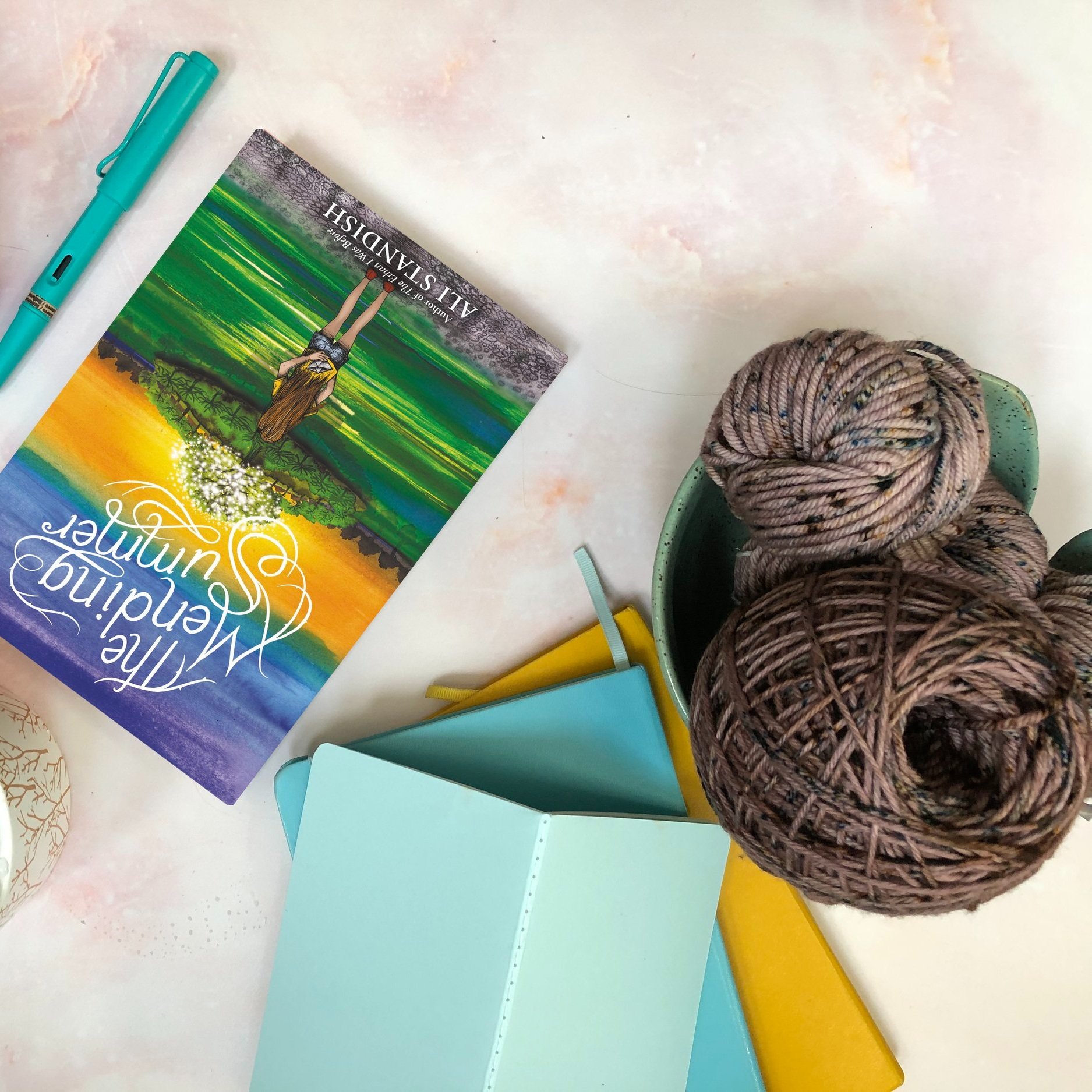





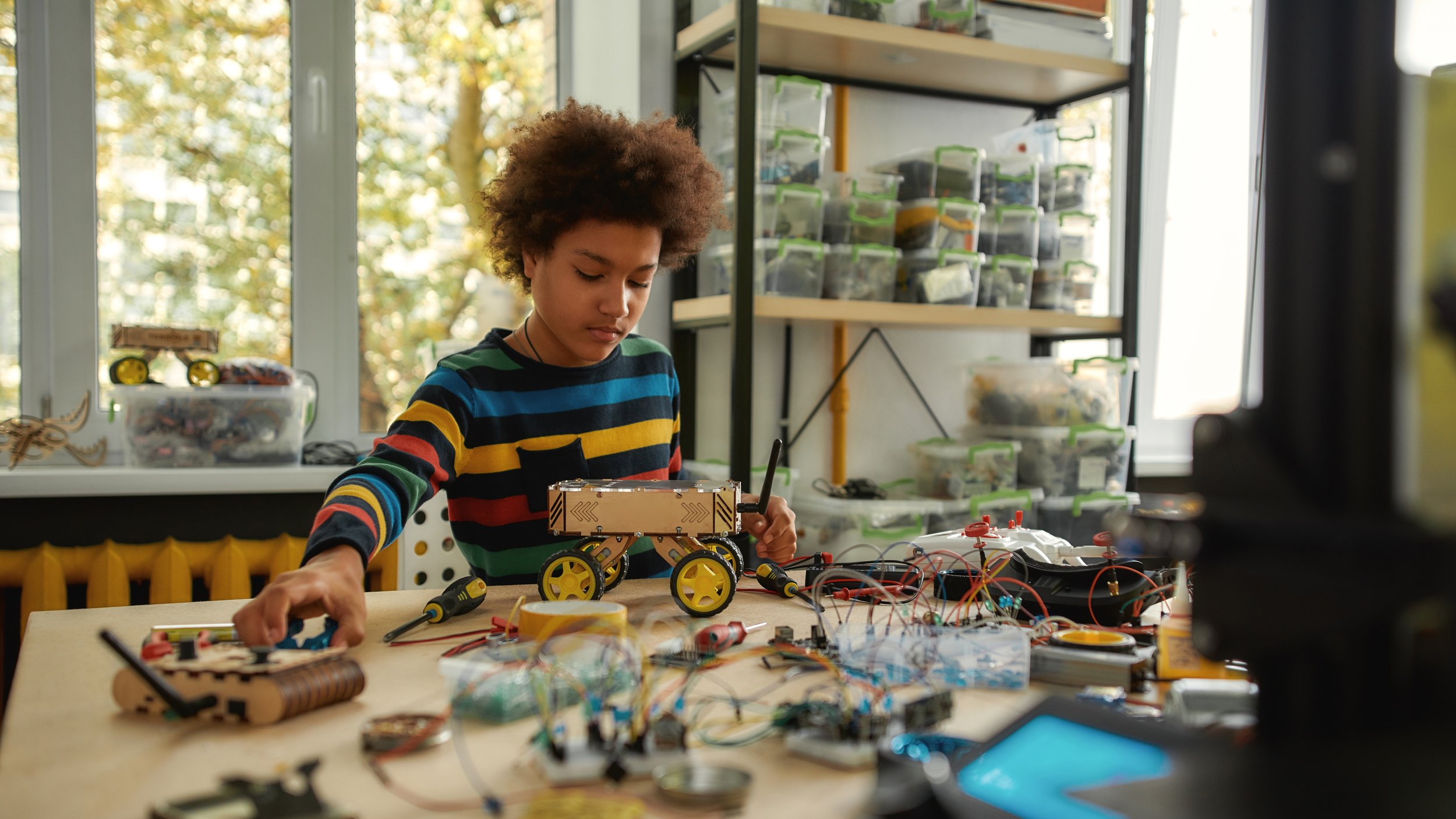
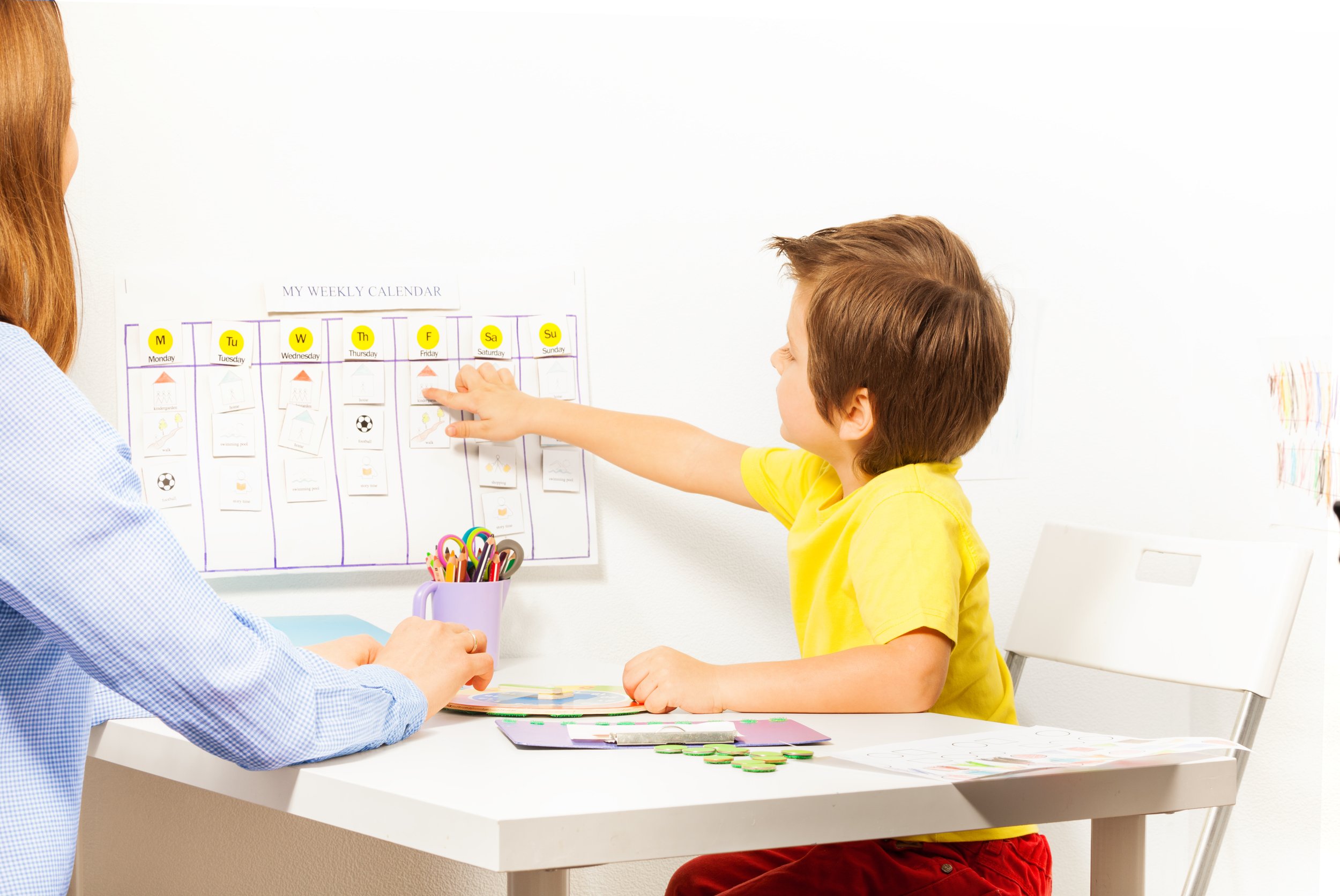




















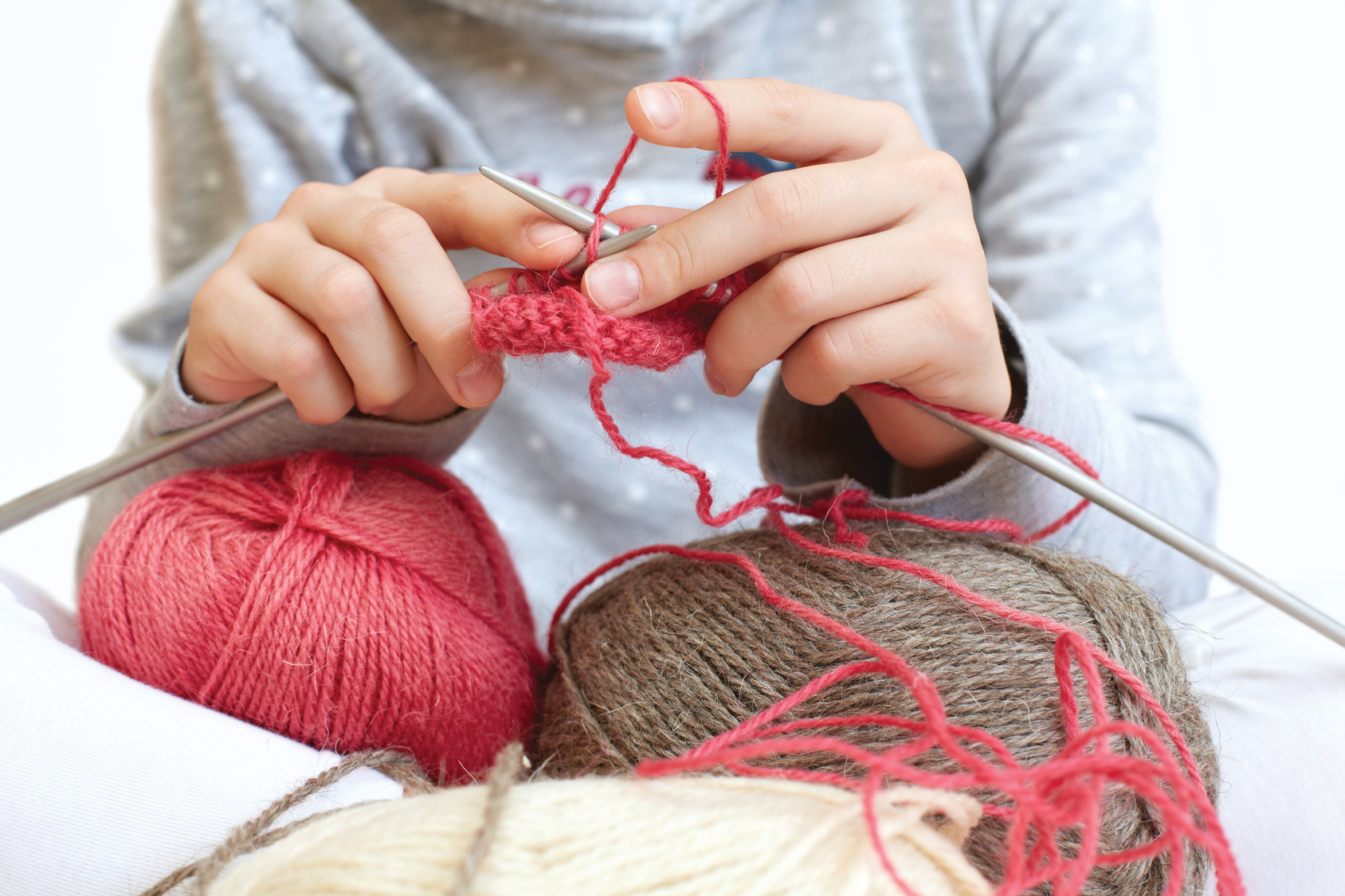














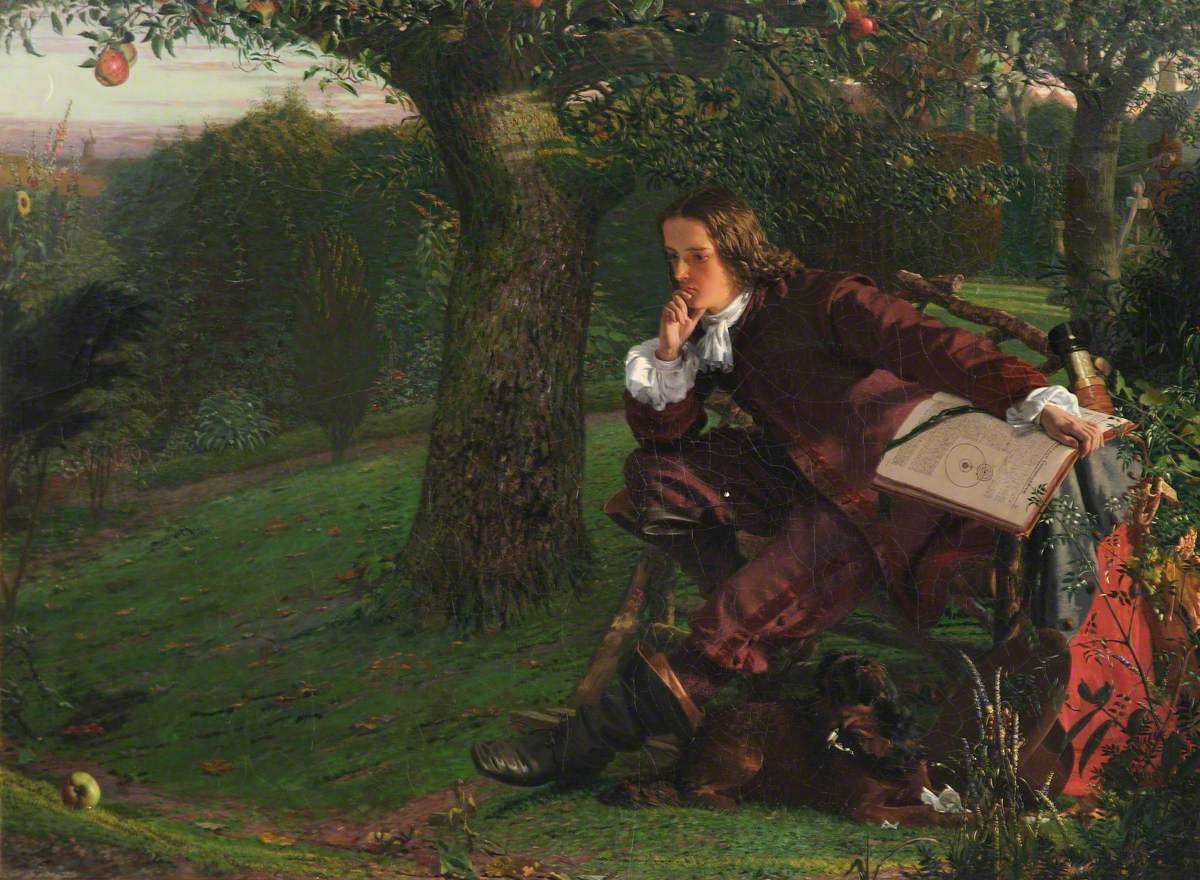










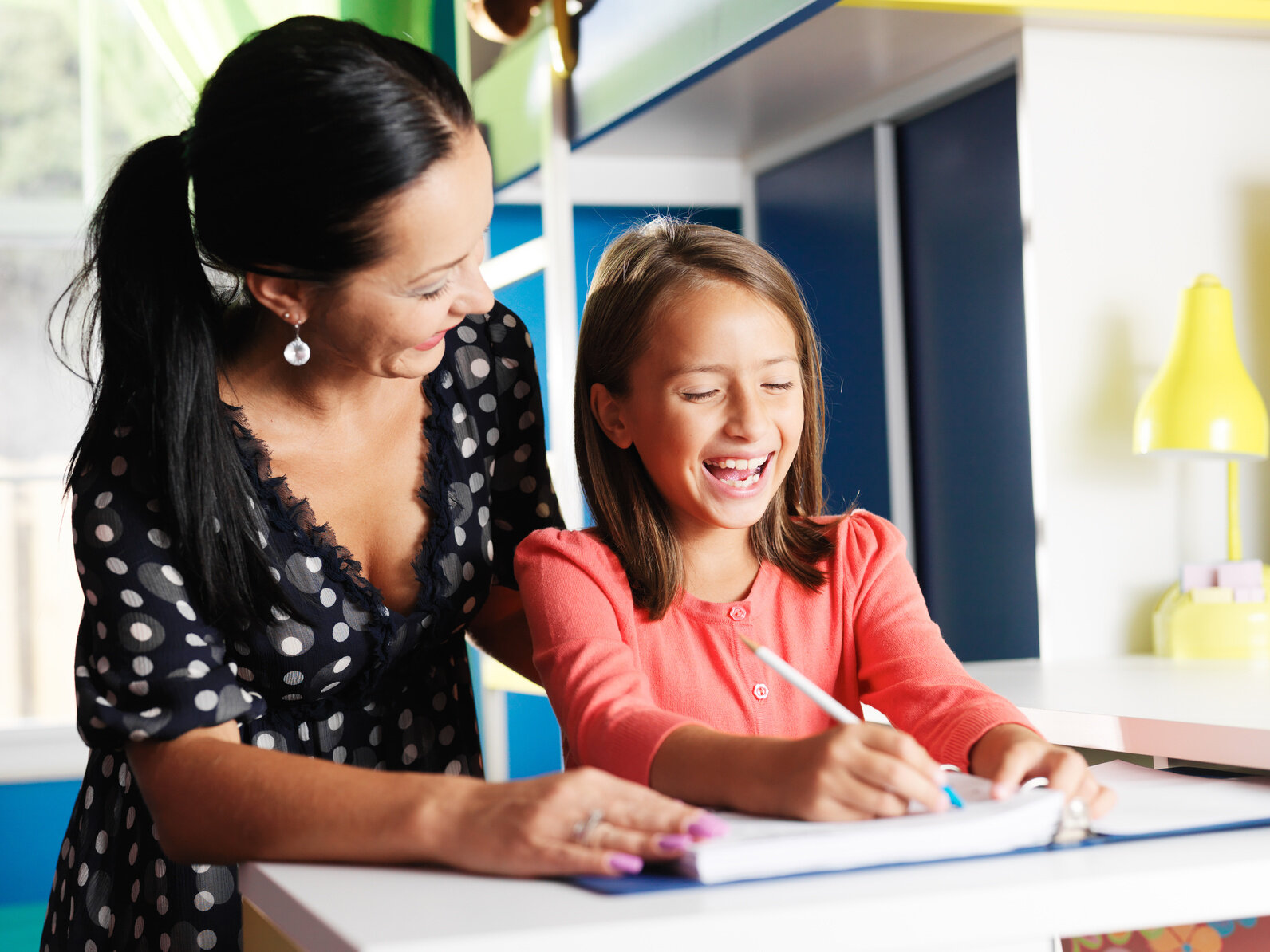
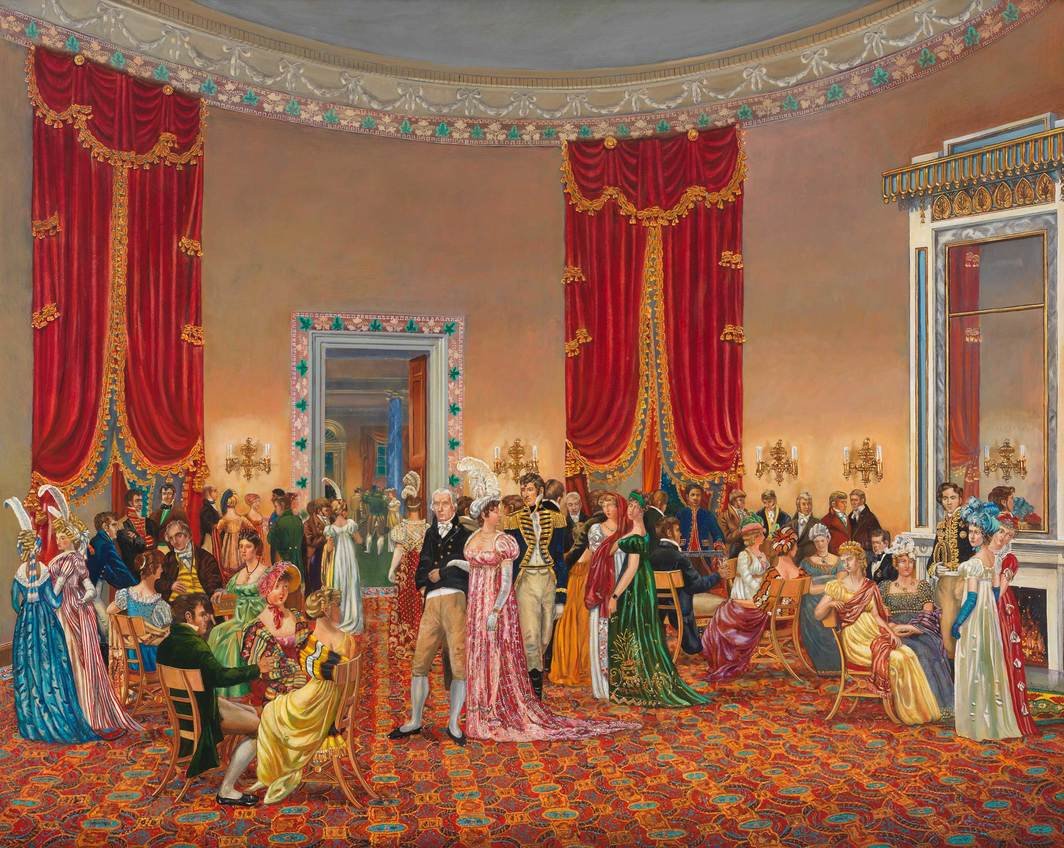













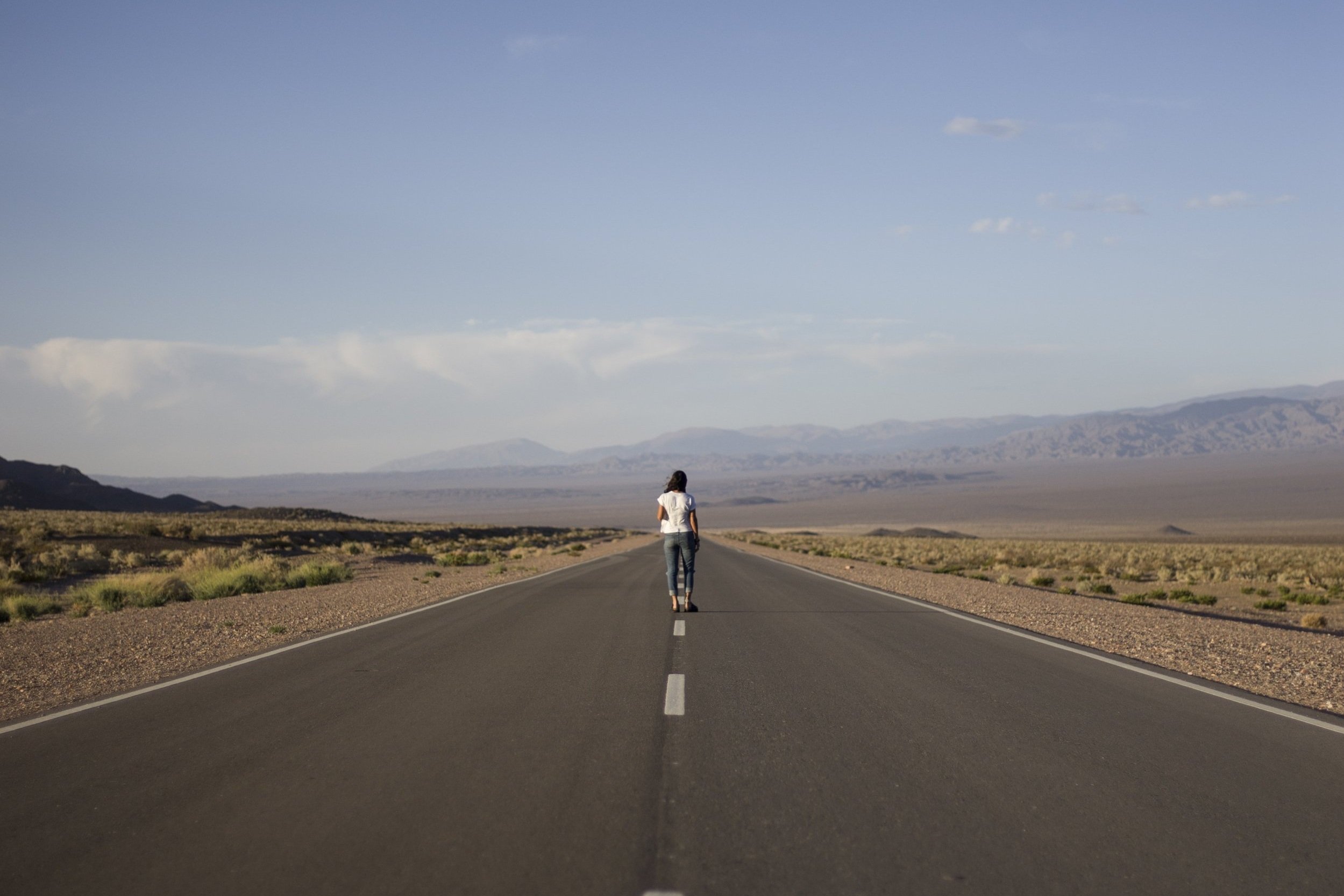














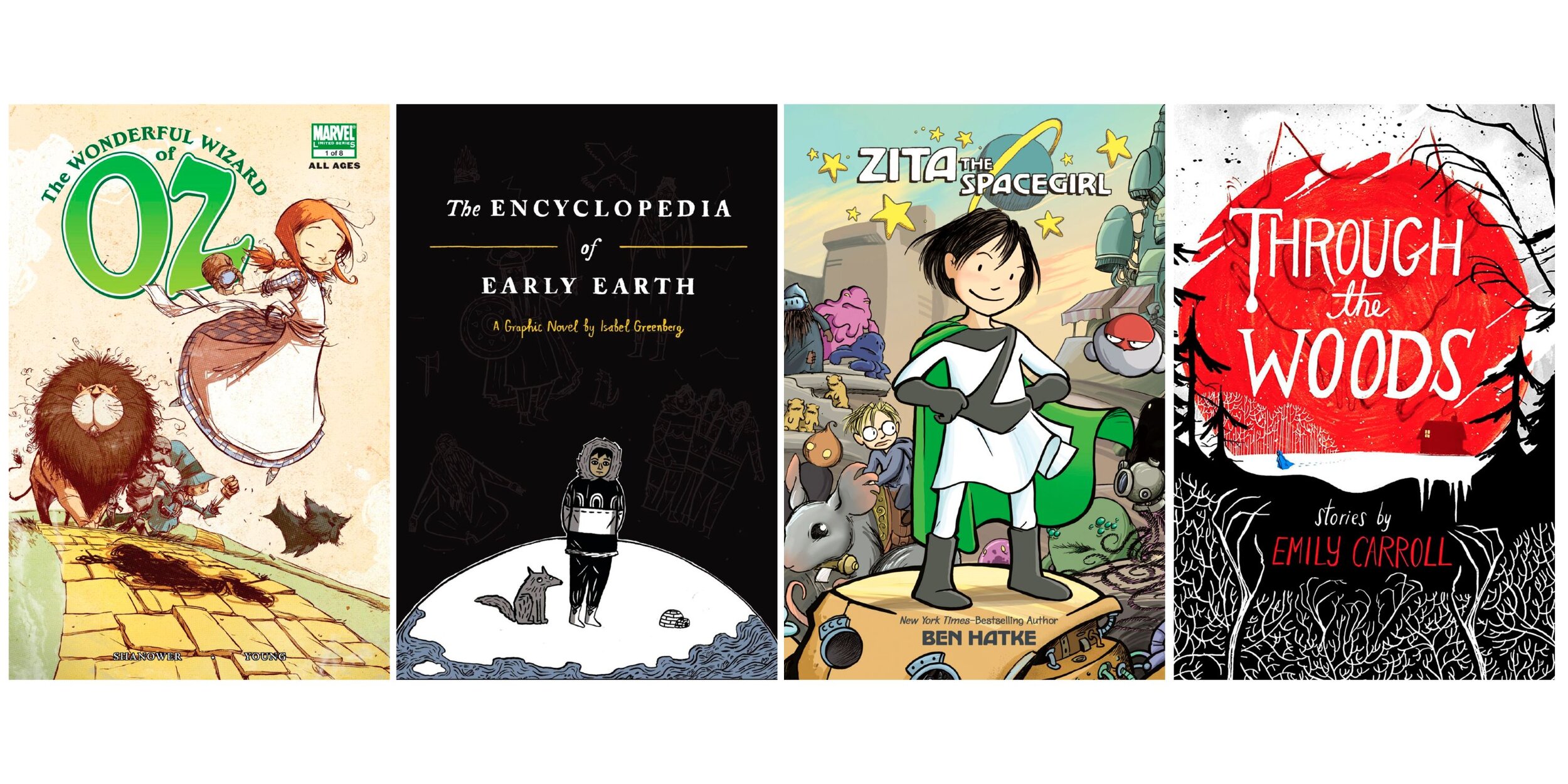








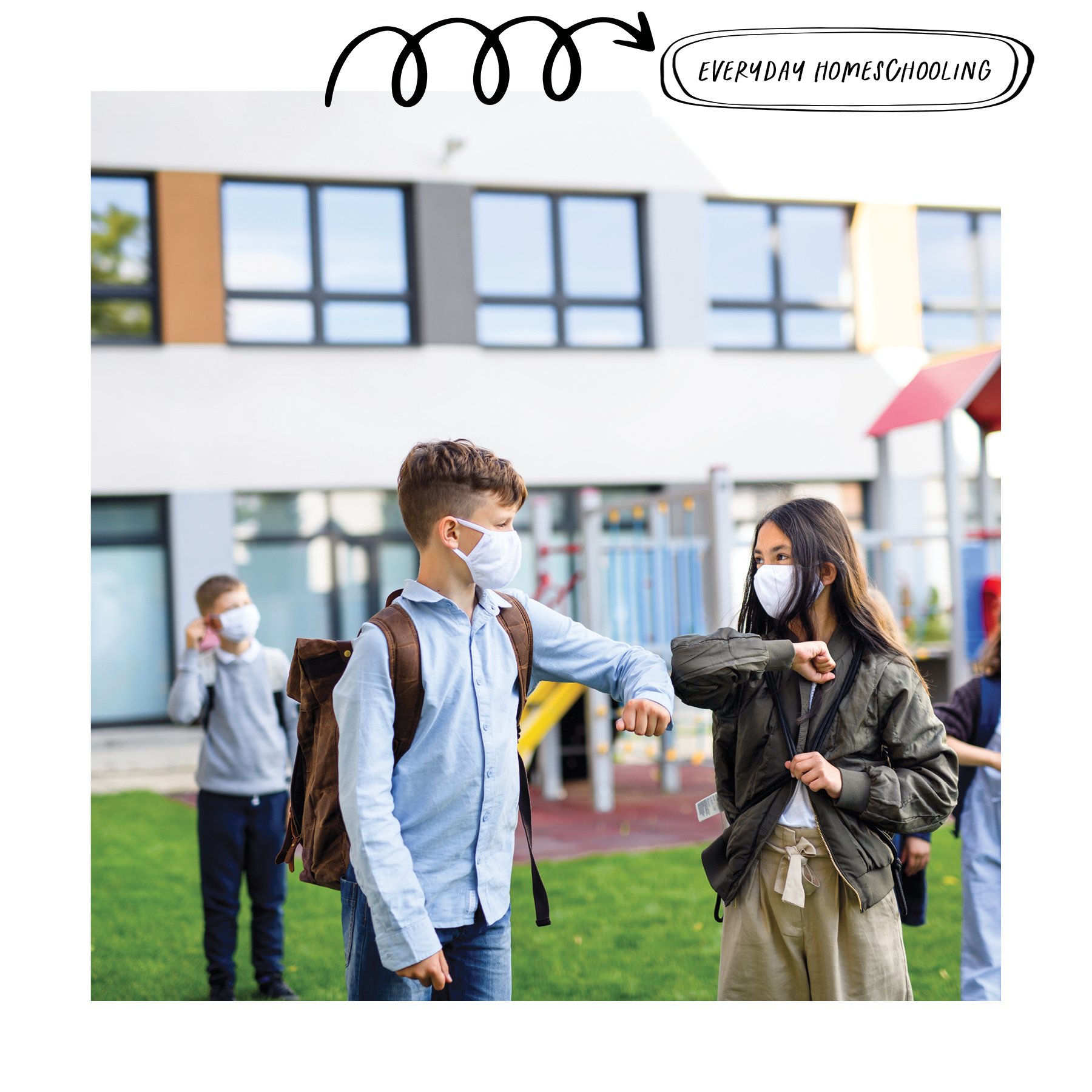












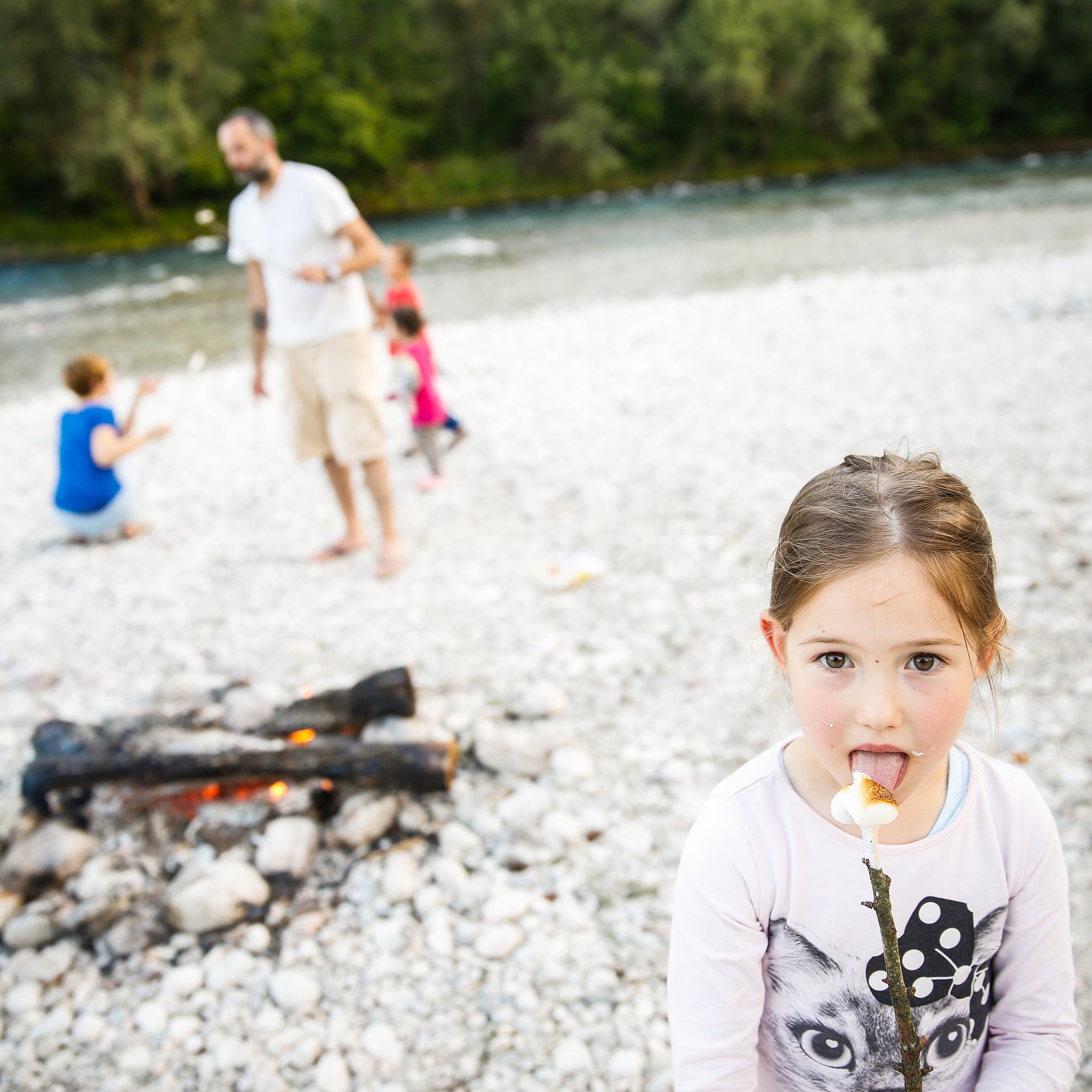











MAGGIE MARTIN writes about empowering kids to be enthusiastic readers and skilled writers at thelanguageartscoach.com. She frequently stays up way too late reading, but she rarely regrets it.